


































































































Aperitivo, the Italian tradition of meeting up for pre-dinner drinks and light fare, is a lovely way to set the mood while welcoming guests as they arrive at your home. Follow our lead and set up the bar using an eclectic mix of furnishings and decor that are reminiscent of travels past, soon-to-be, or inspired through imagination. Feel free to feature our signature summer cocktail, a sparkling twist on an Italian classic. Salute!
Green Front Garibaldi Spritz
1 ½ parts sparkling white wine
1 part bitter orange aperitif
3 ½ parts orange juice
Top off with soda water
Orange slice and rosemary
Visit us today to experience more than 30,000 square feet of unique furniture, accessories, hand-knotted rugs, and luxurious upholstery.
Chairs & Bench by Gabby Home, Table by Sarreid Ltd., Art by Wendover Art, Hand-knotted rug made in Pakistan, Floral Arrangement by The Ivey Guild, Tabletop Accessories by ETU Home, Montes Doggett Currey & Company




























 Presented by:
Presented by:



OUR TOWN
25EXPLORE: Mountain Escapes Five towns with cool breezes
28 LOCALS: Nail Yeah! Crystal Clark’s nail design
31NATURE: Flying Jewels A season for hummingbirds
34MUSIC: Who Tells the Story When research gets competitive
44SIMPLE LIFE: Let There Be Darkness The beauty of the night sky
46NOTED: One More Game Behind the lure of pickleball IN EVERY ISSUE
39ART: Triumph in a Bridge Sculptor Matthew Steele
41GIVERS: Investing in Icons Tom and Pat Gipson’s contributions to Raleigh



49 How I Want to Love You by Pat Riviere-Seel illustration by Marie-Louise Bennet
50 New Space, Same Taste
What’s cooking at the Boulted Bread facilties on Dupont Circle by Addie Ladner photography by Joshua Steadman
56 Dirt Roots
A wooded garden created by a farmer’s daughter by Ayn-Monique Klahre photography by Kate Medley
62 When Painting Is a Practice Lamar Whidbee’s thoughtful art by Paul Baker photography by Samantha Everette
68 Sugar & Salt
A sweet gig takes a turn by Brendan Slocumb illustration by Mariano Santillan
74 Split Fixing a home’s foundation has some unexpected consequences by Valerie Nieman illustration by Jenn Hales












It’s not often that we get to try new things at this stage, said our yoga teacher last week. We were mid-Side Crow, a convoluted pose that involves trying to balance your entire body on your elbows, sideways. Several of us (including me) had already tumbled down, or were too nervous to lift our toes from the ground to see if we could float.
But actually, I feel like recently I’ve had lots of opportunities to try new things.
The yoga, for example: For about six months, my friend Kelli and I have been regulars at the lunchtime hot yoga at Poyner YMCA (shoutout to JJ, our instructor!). Before we decided to try it, I can’t say that I was particularly interested in hot yoga. It sounded sweaty and uncomfortable. But it worked with our schedules, so we decided to try it. And we love it! I don’t know why, but it’s great. I even have occasional graceful moments.
The other thing that’s newish for me: playing the violin. As I’ve written here before, my daughter has been taking lessons for almost two years. As part of her instruction, we’ll take a few minutes out of each of her sessions for her teacher to demonstrate the techniques for me, so I can support my daughter back at home. So I’m learning, too! Having grown up playing the piano, let me tell you: none of this violin stuff is intuitive. My left arm contorts to wrap my fingers around the neck of the violin to get to the strings, and my right hand is meant to hold the bow just so. I get all tensed up trying to get into position — only to be reminded that it’ll all sound best if I just… relax. Yeah, right.
And finally: I’ve joined the pickleball bandwagon. I’m not as obsessed as some people (see p. 46), but I’m sticking with it, for now, partly because I’m learning with a group of girlfriends who like to get Frozen Painkillers at Standard after class.
At this stage in life, when I’ve worked hard to get to a place where some things come naturally (editing, jogging, multiplication, walking in heels), it’s very frustrating to start from zero. It’s particularly frustrating to be mature enough to understand what is supposed to happen but not be able to make it happen. It’s challenging — and, more often than not, extremely humbling. That must be good for me, right?
 Ayn-Monique Klahre Editor
Ayn-Monique Klahre Editor











MEYMANDI CONCERT HALL, RALEIGH


The Music of The Music Billy Joel & Joel & Elton John
FRI, OCT 6 | 8PM SAT, OCT 7 | 3PM & 8PM
Concert Sponsors: WRAL-TV5, WakeMed MyCare 365
Holiday Pops Pops FRI, DEC 8 | 8PM SAT, DEC 9 | 3PM & 8PM Weekend Sponsor: CEI-The Digital Office Concert Sponsor: Wells Fargo



AUGUST 2023
Editor
AYN-MONIQUE KLAHRE ayn-monique@waltermagazine.com
Creative Director
LAURA PETRIDES WALL laura@waltermagazine.com
Associate Editor
ADDIE LADNER addie@waltermagazine.com
Contributing Writers
Paul Baker, Jenn Bianchi, Jim Dodson, Mike Dunn, Jason Frye, Jedidiah Gant, Colony Little, David Menconi, Valerie Nieman, CC Parker, Pat Riviere-Seel, Liza Roberts, Rachel Simon, Brendan Slocumb, Lori D.R. Wiggins
PUBLISHING
Publisher DAVID WORONOFF
Advertising Sales Manager JULIE NICKENS julie@waltermagazine.com
Senior Account Executive & Operations CRISTINA HURLEY cristina@waltermagazine.com
Events Manager KAIT GORMAN kait@waltermagazine.com
Finance STEVE ANDERSON 910-693-2497


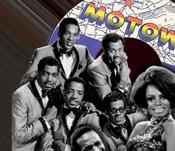




The Magic The Magic of Rodgers and of and Hammerstein FRI/SAT, JAN 1920 | 8PM Let ’ s Groove Let’s Tonight: Motown Meets Motown Meets the Philly Sound the Philly Sound FRI, FEB 9 | 8PM SAT, FEB 10 | 3PM & 8PM Concert Sponsor: Galloway Ridge at Fearrington Totally ’80s ’80s FRI/SAT, MAR 1516 | 8PM THE CLIMACTIC SIXTH EPISODE LIVE “Star Wars: Return of the Return Jedi” I n Concer t Jedi” In Concert FRI/SAT, MAY 34 | 8PM


Contributing Poetry Editor Jaki Shelton Green
Contributing Copy Editor Finn Cohen
Contributing Photographers
Samantha Everette, Kate Medley, S.P. Murray, Eamon Queeney, Joshua Steadman
Distribution JACK BURTON
Inquiries? WALTER OFFICE 984-286-0928
Address all correspondence to: WALTER magazine, 421 Fayetteville Street, Suite 104 Raleigh, N.C. 27601


Contributing Illustrators
Marie-Louise Bennett, Jenn Hales, Gerry O’Neill, Mariano Santillan
Interns
Eliza Martin, Nelie Tahssili
WALTER is available by paid subscriptions for $25 a year in the United States, as well as select rack and advertiser locations throughout the Triangle. Subscribe online at waltermagazine.com/subscribe
For customer service inquiries, please email us at customerservice@waltermagazine.com or call 818-286-3118.

Subscribe now for the best seats at the best prices!

WALTER does not accept unsolicited manuscripts.
Please contact Ayn-Monique Klahre at ayn-monique@waltermagazine.com for freelance guidelines.
Owners
JACK ANDREWS, FRANK DANIELS III, LEE DIRKS, DAVID WORONOFF In memoriam FRANK DANIELS JR.
© WALTER magazine. All rights reserved. No part of this publication may be reproduced in any form without the express written consent of the copyright owner. Published 12 times a year by The Pilot LLC.
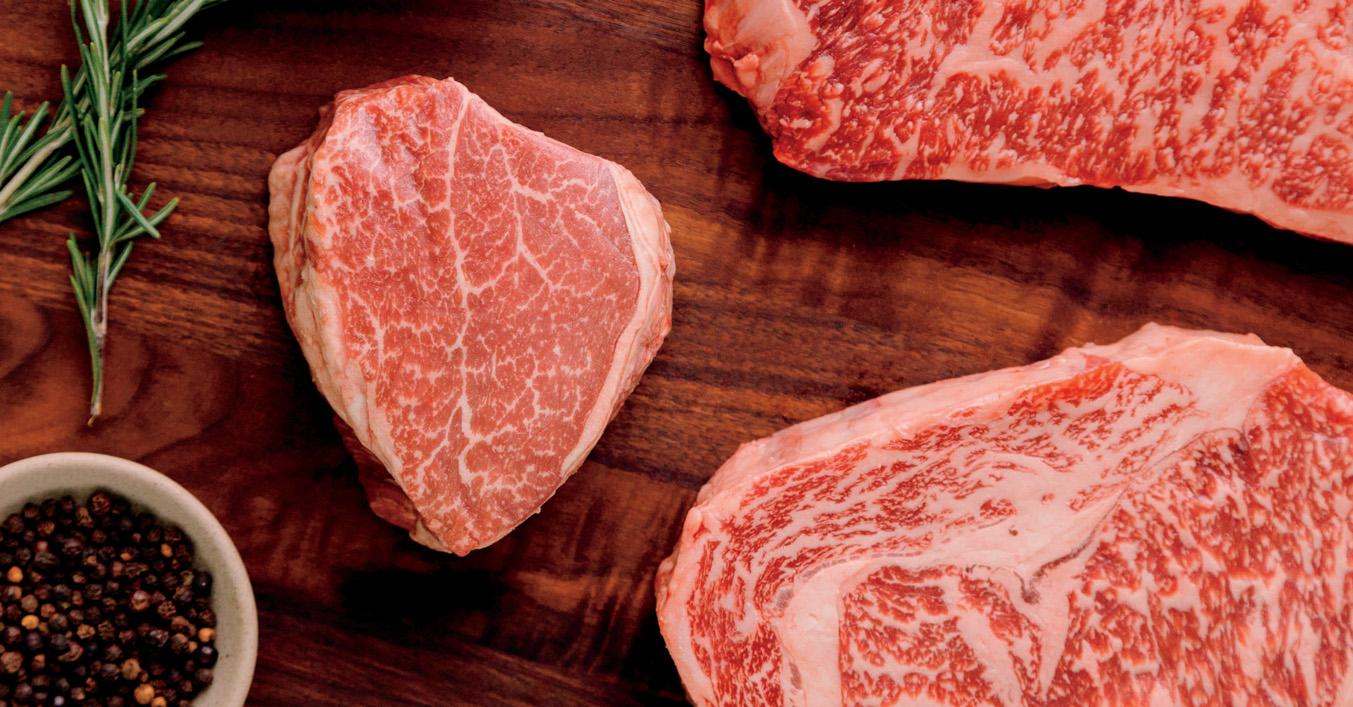







• PLAY • PARTY
We bring special to our specialty store.
2603 Glenwood Ave. #171 Raleigh, NC 27608
919-886-0133
Monday - Friday
10 AM - 4 PM
1805 Pembroke Rd. Greensboro, NC 27408
336-271-4767
Tuesday, Wednesday & Thursday
10 AM - 5 PM
Private Appointments Available
Follow us on Instagram: @dresscodestyleraleigh

Paul Baker is the executive director at CAM Raleigh and a professor of history at North Carolina A&T State University. He holds degrees from University of North Carolina at Chapel Hill, NC State and NC A&T. Growing up in a home with art and books, Baker found interest in both subjects early on. “Working on Lamar Whidbee’s story was an experience of learning about his artistic journey and seeing the impact of family in art. I had very supportive parents and now I get to do the same.”

Kate Medley is a photojournalist and filmmaker. A native of Mississippi, Medley’s work focuses on storytelling and environmental portraiture, often exploring issues of social justice and the shifting politics of this region. Medley lives in Durham, where she works as an independent photojournalist for national and regional news outlets. “Amidst the hurriedness of Six Forks Road, Effie Underwood’s garden is a welcome respite and feast for the senses with her menagerie of fruits and flowers. Heading home from a shoot with a sack of plump figs doesn’t hurt, either!”


JEDIDIAH GANT / WRITER




Jedidiah Gant is a designer living with his wife and two kids in downtown Raleigh, where he’s walked the streets looking for creative opportunities and vinyl records since 2005. By day, he works as a brand director at the video agency Myriad, and by night he helps find walls for new murals with The Raleigh Murals Project. Former projects include news brand New Raleigh, neighborhood-focused Cooke Street Carnival and urban art fund Flight Raleigh. “It’s always fun to find a new hobby or sport and jump right into the deep end. It’s been fun to be front row to watch the pickleball grow so much. I’ve played many games, bought many paddles and met a lot of new friends.” #MakeRaleighColorful
Samantha Everette is a lifelong artist, designer, world traveler and photographer. Born and raised in Durham, Everette graduated from NC State with a BID degree. For a decade, she explored the globe as a shoe designer, living in China and immersing herself in different cultures. However, Everette’s true passion lies in photography, which she defines as “drawing with light.” Her mission is to capture her subjects’ inner light and showcase it to the world. “Capturing Lamar on camera was an absolute joy! The experience was made even more extraordinary by our thought-provoking conversation.”

Bill Warden, the subject of the June article “D.I.Y. Dad,” with his wife, Nancy. “I’m just happy to know that all the big projects are over with... I think,” she says.

Young readers Owen and Remy Teed enjoyed seeing Matt Robinson’s photos in our July issue!

Campbell University invests in each student. We prepare each one to make a life, to make a living and to make a difference. Our students are welcomed into an inclusive community of family, and mentored to become leaders who will impact the world. Inspired by our faith and belief in the power of education, we encourage each student to grow academically, spiritually and socially through the world of opportunities that surround them. Our students, faculty and alumni are energized with the charge to lead with purpose.
campbell.edu









Enjoy the tail end of summer with live music, worldly art, fresh produce and some fun fitness

 by ADDIE LADNER
by ADDIE LADNER


Aug. 2 - 5 | Various times
3…2…1…Go! See Olympic-caliber athletes try to break records at the Sir Walter Miler. This race is the climax of a three-day celebration that features a dozen professional runners (last year the lineup included Nikki Hiltz and Yared Nuguse). “It’s special because spectators can get so close to the athletes and cheer them on right on the track,” says Pat Price, one of the event’s founders. This is the 10-year anniversary of the race, which originated with championship runner Sandy Roberts, a Broughton High School and North Carolina State University graduate. He wanted to break a four-minute mile, and hundreds of fellow runners, friends and family lined a track at Cardinal Gibbons High School to cheer him on. He didn’t meet his goal, but it inspired him and running pals Price and Logan Roberts to make an annual event out of trying. “No one in North Carolina had run under a four-minute mile since the 1970s. Since then, around 69 runners have broken that record,” says Price. On Wednesday, Aug. 2, enjoy a morning coffee run with some of the pros starting at Runologie (1614 Automotive Way) and a Q&A panel there with the runners in the evening. On Friday, head to the pre-party at Raleigh Brewing (3709 Neil Street) then line the track for the big race at Meredith College (3800 Hillsborough Street), followed by a post-party back at Raleigh Brewing. On Saturday, the community is invited to join the Raleigh RunDown Downhill Mile (Oval and Blair Drive on Centennial Parkway; raleighrundown.com) before finishing out the weekend at Trophy Brewing (656 Maywood Avenue). Various prices and locations; sirwaltermiler.com

Aug. 1 | 8 p.m.
Sam Smith — the British music sensation who broke into the music scene with their hit “Stay With Me” in 2014 and went on to win many Grammys — will take the stage at PNC as part of their “GLORIA” tour. Award-winning Canadian musician Jessie Reyez will open for Smith with her original, soulful tunes. From $54; 1400 Edwards Mill Road; pncarena.org
Tuesdays | 11 a.m. - 2 p.m.
NOFO @ The Pig wants you to try some new flavors — and not from its own kitchen! Each Tuesday this summer, this Five Points gift shop and restaurant is hosting a different food truck in its parking lot during lunchtime, with both indoor and outdoor seating available. Among them: Tri Seafood, Big B’s Southern Kitchen, Virgil’s Jamaican and Hollywood Taco Shop. Cost varies; 2014 Fairview Road; nofo.com

Aug. 6 | 12 - 4 p.m.
Shop handmade items from regional creatives at Durham’s biannual Patchwork Market at the Armory. Launched
All information is accurate as of press time, but please check waltermagazine.com and the event websites for the latest updates




Book in-person and virtual visits with providers who treat you right.
One Medical makes it easy to get primary care for your body and mind. Whether you visit us in our comfortable, modern offices or right from your phone, our providers and care team will make you feel seen, heard, and cared for.





















Learn more at onemedical.com/WalterMag
Doctors on a first-name basis
Drop-in lab services
Dedicated member support
Next-day appointments
24/7 virtual care via message or video
Save $55 on your 1st year of membership. Use code: WalterMag




in 2014 as a way for small businesses to interact directly with their customers, it has grown into one of the largest artisan markets in this area. “The goal is to support and promote local artists, designers and entrepreneurs by providing them with a platform to showcase their work and connect with the community,” says Morgan Grimm, who founded the market. Among the more than 50 vendors, you’ll find Raleigh-based Grayhill Made ceramics, Ware Ware Studio and Earth Folk Apothecary. Free admission; 212 Foster Street, Durham; thepatchworkmarket.com
Aug. 10 - 20 | 3:30 & 7:30 p.m.
Now a Theatre in the Park tradition, Noises Off! follows a discombobulated cast as it attempts to stage a risqué comedy. Written in the early 1980s by English playwright Michael Frayn, this classic play is full of doors slamming, innuendo and on- and off-stage intrigue. “To thank our patrons for their continued support through Covid, we allowed them to request the performances they wanted to see in our 2023 season,” says Yamila Monge, the theater’s box office and guest services administrator. “This was the most-requested show!” From $29; 107 Pullen Road; theatreinthepark.com

Aug 12 | 6 - 10 p.m.
Hip-hop’s origins date back to the 1970s in New York City’s Bronx, where musicians in predominantly Black and Caribbean communities would combine DJ tracks with improvised vocals to make the soundtrack for block parties. Eventually the music made its way
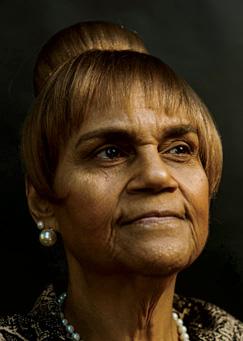


NOTED



The Voices of Oberlin exhibit at the Block Gallery features portraits and oral histories from more than 20 residents that describe the joys and tribulations of life in Raleigh’s historic Oberlin Village. Curated by Michael S. Williams of the Black On Black Project, the exhibit features photography by Derrick Beasley and Teresa Moore, who captured each participants’ character and voices. Among them, Oberlin resident Joyce Morgan recalls the time her front porch was egged after her father attended a meeting led by the Rev. Dr. Martin Luther King Jr., and Joseph Holt Jr., describes picking wild plums and peaches from the nearby woods before the area was developed. Friends of Oberlin Village executive director Sabrina Goode hopes that this first-person historical account will help present and future generations understand the importance of the last known intact settlement founded by a free Black person in North Carolina. “The poignant stories have a common theme of the unwavering love between all residents of the community,” says Goode. “Behind each message is the steadfast grace and dignity shared by the residents despite the strengths and struggles they encountered daily, from the injustices of racism to the gentrification of their beloved neighborhood.” Free; Raleigh Municipal Building, 222 W. Hargett Street; raleighnc.gov
South. “When hip-hop was evolving in the 1980s and ‘90s, Raleigh was the center of the New Great Migration, as African Americans began to leave the North and move south,” says Grady Bussey, a Friends of the City of Raleigh (COR) Museum board member and organizer of the event. “Many rappers moved to Raleigh and attended our local Historical Black Colleges and Universities, which gives our area many layers of influence on the genre.” The Sneaker Ball will celebrate 50 years of
hip-hop with performances by artists like 3am Sound, Southside Heat, Exhale TAOP and Nacynze. Also enjoy food trucks, vendors and a dance-off led by the Raleigh Rockers. “Uncovering the origins of hip-hop, and its path to Raleigh, is important to understanding the city’s culture today. We can’t wait to celebrate our city’s contributions to this global phenomenon,” says COR Museum director Ernest Dollar. $65; Raleigh Union Station, 510 W. Martin Street; cityofraleighmuseum.org
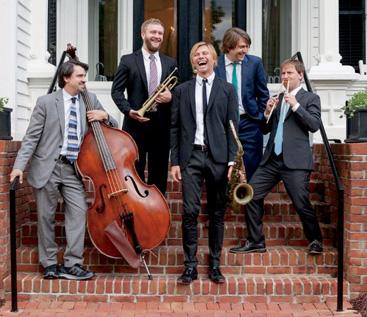
Aug. 15 | 8 - 11 p.m.
The Oak City Music Collective has a new monthly series on Tuesday evenings: the International Jazz Open Jam. Hosted at Neptunes Parlour, the open music sessions will celebrate Latin jazz, Afrojazz and other variations of the genre heard around the world. In an “open-jam” format, the headliner
will kick off the night while inviting other players to the stage. This month, Raleigh’s five-piece jazz-inspired band Peter Lamb and the Wolves will start the jam. Free; 14 W. Martin Street; oakcitymusic.com
Aug. 18 | 7:30 p.m.
Presented in partnership with Chapel Hill music venue Cat’s Cradle, join the Steep Canyon Rangers at the North Carolina Museum of Art’s amphitheater for a night of banjo, twangy vocals and overall good times. Amythyst Kiah, a bluesy singer-songwriter from Tennessee, will open for this Grammy-winning band from western North Carolina. Make an evening out of it: use the Picnic in the Park program to preorder dinner for that evening. Wine, beer and other beverages will also be available for purchase. From $30; 2110 Blue Ridge Road; ncartmuseum.org
Aug. 25 | 7 p.m.
Join NC State LIVE for laugh-inducing improv and comedy from The Second City — a world-renowned venue and teaching organization in Chicago that launched the careers of Tina Fey, Stephen Colbert, Keegan-Michael Key and Steve Carell, among other big-name funny folk. Tickets on sale Aug. 16; 2610 Cates Avenue; live.arts.ncsu.edu
Aug. 25 | 9 - 10 a.m.
Bring your mat to The Commons at North Hills for a complimentary yoga class hosted by Midtown Yoga during the Midtown Farmers Market. Before or after class, shop the market (8 a.m. to 12 p.m.) for seasonal produce like watermelon, heirloom tomatoes, basil, zucchini and peaches. Free; 4191 Main at North Hills Street; visitnorthhills.com








All month | Various times
C See a rich sampling of Haitian art from the late 20th and early 21st centuries at Gallery C. A total of 50 pieces will be on view and for sale depicting the mythology, foods, animals and landscapes of the Caribbean island. “Discovering, selling and personally collecting Haitian art has been perhaps the most rewarding chapter of my career,” says gallery owner Charlene Newsom, who started this collection in 1987. “The combination of wonder and deep spiritualism in this art is endlessly appealing.” Each piece is different, but much of the work shows themes of the Roman Catholic and African influences on the island’s traditions. Some of Newsom’s favorite pieces are colorful paintings portraying everyday life by Port-au-Prince natives JP Auguste and Wilson Bigaud, and whimsical depictions of the underwater world by André Blaise. Free to view; 540 N. Blount Street; galleryc.net





DRI has provided state-of-the-art imaging services for nearly 40 years. Now in the Raleigh area, we hope you will let us care for you and your family. We offer immediate appointments and exceptional care in a beautiful, comfortable environment.
• CT Scan • X-Ray
MRI • Ultrasound • Cardiac Scoring • Lung Screening
• Virtual Colonoscopy
Wakefield Professional Plaza 11009 Ingleside Place Suite #103, Raleigh 919.521.8311
Hours: Monday–Friday, 8am to 5pm DR I healthgroup.com
Aug. 26 | 12 - 3 p.m.
Join the University of North Carolina at Chapel Hill’s PlayMakers Repertory Company for a behind-the-scenes look into its upcoming season. Hosted at the Joan H. Gillings Center for Dramatic Art, enjoy interactive workshops, local food trucks, live music, backstage tours, kids’ activities and a chance to mingle with staff and performers. “We throw the doors wide open — this is our opportunity to welcome folks back to Chapel Hill after summer and meet newcomers to the area,” says associate artistic director Jeffrey Meanza. “Our hope is that the event underlines our belief that PlayMakers is a theater for all North Carolinians.” Free; 120 Country Club Road, Chapel Hill; playmakersrep.org
Aug. 26 & 27 | 9 a.m. - 5 p.m.
At this two-day festival in downtown Cary, enjoy live music, a beer garden, 20 different food vendors, kids’ activities and shopping creations from 300 artists from all across the country. Make your mark on the Pixel Wall, a mural that will develop throughout the festival as folks color in the blocks or catch a nap in one of the Lazy Lounge Hammocks. “The festival was founded to celebrate the lazy days of summer and bring the community together,” says Jenna Kostka, festivals and events supervisor with the town of Cary’s Parks and Recreation department. Free admission; downtown Cary; carync.gov






Cool off at one of these five lesser-known North Carolina towns
words and photographs by JASON FRYE
With summer settled into peak humidity, many folks love to escape Raleigh in search of cooler climes. Enter the mountain getaway. But where to go? You’ve probably already been to Asheville, Boone and Blowing Rock — all great destinations — but perhaps it’s time to try someplace new.
We’ve pinpointed five lesser-visited towns where cool breezes, cooler streams and mountain views make for exceptional escapes. Each has its own personality — which one’s right for you?
FOR THE THRILLS: BRYSON CITY
Tucked tight against Great Smoky Mountains National Park (GSMNP), Bryson City’s a haven for hikers and adrenaline junkies. Make your way toward the Nantahala Outdoor Center, where whitewater rafting and kayaking on the Nantahala River
delivers Class V thrills. If whitewater sounds like too much, try tubing down Deep Creek in GSMNP. Bring your own tube or rent one from nearby outfitters, just don’t forget your parking pass (from $5 daily) in the National Park. Bring your hikers because the Deep Creek Waterfall Loop — an easy, 2.4-mile loop — will lead you past Tom’s Branch, Indian Creek and Juney Whank Falls.
Eat & Drink: There’s almost always a line at Pasqualino’s Italian Restaurant, so arrive early when you want fresh pasta and pizza. Bryson City Brewing has 18 guest taps and a big yard for kids and pets. And if you’ve been rafting, tuck into something tasty at Nantahala Outdoor Center’s Big Wesser Riverside Pub and Grill, where the Sherpa Veggie Rice Wrap has been a long-time favorite.
Stay: The Lakeview at Fontana. “The treetop soaking cabanas overlooking Fontana Lake are somehow both rustic and luxurious. And you won’t believe the view from the tub,” says Christina Riley, cofounder and photographer behind NCTripping.com, a Durhambased travel website.
Apple orchards and wineries dot the mountains surrounding Hendersonville, where a downtown full of restaurants and boutiques offers plenty to keep you busy. Grandad’s Apples & Such, Jeter Mountain Farm and Sky Top Orchards have dozens of apple varieties to pick from midsummer into fall, plus fresh cider, donuts and, of course, corn mazes and the like for kids. Go for a tasting at Point Lookout Vineyards (they also have a meadery) and another at the Bordeaux-style Stone Ashe Vineyards. Downtown you’ll also find the Appalachian Pinball Museum (Riley says it’s “fun for the kids, but maybe more fun for the adults!”), a Mast General Store and plenty of gift shops (like A Walk in the Woods, which


is full of works by local artists and craftspeople, and Wag!, a pet boutique). You’re only 10 miles from Saluda, where Green River Cove Tubing will get you on the water for the day. Or catch a breeze as you take in the sunset from Jump Off Rock, a scenic overlook that is a five-minute drive from downtown. Eat & Drink: Grab breakfast or lunch at the kid-friendly HenDough Chicken & Donuts for donuts, biscuits and fried chicken sandwiches. Mike’s on Main, a former drugstore, is perfect for a burger and shake at the lunch counter. Postero serves a New American menu that pleases nearly any palate (the Kale Caesar and Pork Frites with Alabama White Sauce shine). Downtown, hit up a brewery like Oklawaha Brewing Company or D9 for a flight or more, but don’t forget The Poe House for cocktails, hard-to-find beers and shareable sandwiches and bites. Stay: Create a home base at The Henderson, a historic B&B built in 1919 that’s walkable to downtown (the wide porch is ideal for planning the next day over evening drinks). The Hampton Inn Hendersonville is one of several chain hotels in town.
Brevard’s a perfect base camp for exploring trails and waterfalls on foot or on two wheels. Plus, “you can throw a rock and hit a great brewery in Brevard, which is fortunate because all that outdoor fun like hiking, biking, swimming and fishing is thirsty work,” says Joanna Postlethwaite Brown, brand and communications manager for the MADE X Mountains Partnership, a nonprofit working to grow the outdoor economy in Western North Carolina. Brown, who spends much of her free time in the saddle of her mountain bike or on a hiking trail, recommends hiking Pink Beds as a family, but says that her favorite area to hike or bike is Dupont State Recreational Forest. At Dupont, looping hiking trails and gravel roads lead to Triple Falls, High Falls and Bridal Veil Falls. “The roads are delightful and beginner-friendly, and the scores of single-track loops add challenge and distance,” says Brown. If you don’t want to pack your bike, rent through an outfitter like Earth Mountain Cycle, The HUB or Squatch Bikes; for guided rides, try The Bike
Farm and Red Wolf Tours.
Eat & Drink: Back to the breweries: Brown recommends Ecusta Brewing, right by the paved walking/biking Ecusta Trail, as well as Oskar Blues’ Tasty Weasel Taproom and CHUBwagon food truck. Downtown, dine at The Square Root, where the stuffed local trout speaks to regional cuisine and the duck bacon wontons show the chef’s range.
Stay: The Sunset Motel offers a nostalgic stay in a lovingly restored eight-room motel, but campers should look at Adventure Village and Lodging, a family-friendly campground with cabins, RV and tent sites, and miles of trails across its 90-acre property.
Yes, Sylva and Dillsboro are two towns — but at just a mile apart and with only four stoplights between ‘em, they come as a unit. Dillsboro is the smaller of the two, full of little shops and a crafts gallery. Sylva’s larger, and on its Main and Mill Streets, there’s a fun collection of antiques shops, breweries and eateries. From either town, a drive of 20 minutes puts you on the Blue Ridge Parkway or in GSMNP, with easy access to Waterrock Knob and Devil’s Courthouse on the Parkway, and Kephart Prong and Newton Bald Trails in the Smokies. Sylva’s Pinnacle Park, 15 minutes from downtown, offers miles of hiking and exploration, with a twist: it’s North Carolina’s first (and only) Certified Forest Therapy Trail, a path designed specifically for forest bathing. “It has everything needed for a restorative forest therapy experience,” says Dr. Mark Ellison, the mind behind the trail. “Natural quiet, the whispers of a gently flowing creek” and a trail that’s not too strenuous. Pamphlets at the trailhead help you dive into your first forest therapy session, but Ellison says it’s easy to do anywhere: “Find a place to experience nature with few distractions. Turn off your phone. Slow down. Notice with


all your senses. Just be.”
Eat & Drink: After you’ve cleared your mind and recharged at Pinnacle Park, you’ll need to refuel. City Lights Café offers breakfast and lunch and a great selection of books (many with a local focus). Innovation Brewing, with tap houses in both towns, has an excellent selection on draft (including sours). Dine at Ilda, one of the best Italian restaurants in the state.
Stay: Spend your night at the Nordicinspired Outland Chalet & Suites, a swanky hilltop spot just outside of town where the seven-room chalet and five spa suites can accommodate couples, groups and families. And consider the Best Western Plus River Escape Inn and Suites — it has fire pits, a riverview deck and updated rooms.
The artsy little town of Burnsville sits on the flanks of Mount Mitchell, somehow off the radar of many travelers. In late summer, the Mount Mitchell Arts & Crafts Fair (Aug. 4-5) fills downtown with artists, artisans and the sound of bluegrass music. Twice
yearly (in June and November) the Toe River Arts Studio Tour showcases the best of creatives in Yancey and Mitchell Counties. And at Hearth Glass & Gallery you’ll see exceptional works by regional artists and take a glassblowing class to create your own piece. Get inspired by a trip to the top of Mount Mitchell, the highest peak in the state, accessible by a grueling 12-mile trail or a steep, short hike to the summit from a nearby parking area.
Eat & Drink: You’ll find some great barbecue at Pig & Grits where the only thing better than the meat is the fried green tomatoes. The beer selection at Birdfoot keeps a regional focus, but they serve the best brews of the moment, so don’t be surprised to find selections from across the nation. For local brews, check out Homeplace Beer Company; their Faith Healer IPA and wood-fired pizza are a perfect pair. Stay: In a cabin at Mount Mitchell Eco Retreat, not too far from the sensational sunset views from the summit of nearby Mount Mitchell; while you’re here, be sure to book a massage or other treatment from The Healing House.



Nail Yeah feels more like an artist’s studio than a nail spa. There are no oversize chairs, no jetted basins for pedicures. Instead, there are two simple, well-lit work stations, with an array of tools and brushes at the ready. Nearby is a colorful assortment of bottled art gels, gel polishes, pigmented foils and chromes. Disco ball planters
hang over a chair shaped like a hand with red-painted nails. One wall displays a gallery of nail designs for sale.
This salon is the brainchild of Crystal Clark, a nail technician who specializes in gel nails, custom nail art and affordable, reusable press-on designs. And like her salon, her work defies expectations: her unique designs will draw on anything from abstracted elements of nature
to African mudcloth prints. In the 10 years since she founded Nail Yeah, Clark has been cultivating a niche market for fans of nail art in Raleigh.
When Clark first opened her salon, there were limited options for clients who were interested in bold, edgy nail art. At traditional nail salons, the techs could shape nails, pamper hands and apply polish, but few could
create a design once the manicure was complete. “There were no other salons that were offering nail art and I had an incredibly strong hunch that this was something people would want,” Clark says. “I wanted to give them another option because it was something I was passionate about.”
Clark grew up in East Raleigh, where she spent her days in her mother’s hair salon on Rock Quarry Road, shampooing clients and hanging out with the nail tech. “I thought it was amazing what she would do — the long nails with all the art, Detroit and Chicago style,” says Clark. “She would let me sit with her all day and we would talk about everything.”
As a teen, manicures were a hobby; Clark would paint her friends’ nails in her bedroom. She dreamed of a career in fashion design in New York. She studied fashion marketing at the Art Institute of Charlotte, but quickly had second thoughts about her chosen area of focus. “About eight months into the program, I realized this was not what I thought it was going to be. With this degree I could really only work retail,” she says.
After graduating, Clark pivoted to makeup art, managing a freelance portfolio while also working for local retailers. She ultimately opened her own retail beauty supply store, called Glossy, on Commonwealth in Charlotte. “I still did makeup and my business partner did nails, and she would always tell me, Crystal, you need to do nails, you’re a nail tech,” says Clark.
It was during this time that Clark started hanging out with photographers. “I was really into that idea of being around people who are into the things you want to do, and I was drawn to the culture,” she says. Clark found freelance work doing makeup for model calls and test shoots. To build contacts, she frequently participated in “Trade for Prints,” or TFPs, where photographers, models and makeup artists would work together to set up photo shoots for their portfolios.

During one TFP, she connected with a model who lived in Harlem; the model invited Clark to a photo shoot in New York City. There, she met two Bronx photographers. “It just branched out from there,” she says.
One photographer, Nigel Ho Sang, gave her the nudge she needed. “He said, If you can do nails, I can get you jobs as a nail tech,” Clark says. He introduced her to a well-known manicurist named Michina Koide, who hired Clark as an assistant on editorial shoots. As Clark built her portfolio, she worked with celebrity stylists and photographers. (A highlight: working on a shoot for artist and singer Solange Knowles with fashion photographer Itaysha Jordan.)
Living in New York City was a formative period for Clark, both creatively and personally. “You could just be in New York. I felt like there was a place for me there. The things I’m interested in, the things I think are beautiful, there are other people that feel the same way,” she says. “It also gave me confidence to keep moving forward because I went there without many contacts and not much awareness, just a belief in myself.”
After two years in the Big Apple, Clark made the decision to return to North Carolina, where she gave birth to her daughter. Once back home and closer to her family, she made another important career decision: to go back to school, for a nail tech license from Troutman’s College of Manicuring.
She created Nail Yeah in 2013, starting out by participating in pop-up nail bars, trunk shows and music events. She gave out business cards that doubled as nail files; she was strategic about cultivating a strong social media presence. By 2014, she was able to open her first salon, in the Carter Building on Glenwood Avenue. There, Clark regularly held events, inviting guest nail artists, beauty brands and other partners into her space. She developed a tight but loyal client list.
Artspace CEO Carly Jones is among those longtime clients. “I have developed a trusting relationship with Crystal over the years and I respect her artistic eye,” says Jones. “She knows my style and threshold for experimentation.” Jones often calls for Clark’s Freestyle service, where she spontaneously creates a look for her customers.

“I like to vibe with my clients,” says Clark. “I get to know them, see what they’re wearing or how they’re accessorizing, and that’ll determine the nail art that comes out.”
Nail Yeah’s most popular design is a Milky Floral, where Clark layers translucent polish with floral patterns so that they appear suspended in liquid. But Clark can create a design inspired by just about anything: 1960s psychedelic patterns, illustrations from flyers for a 1990s rave, even poppy graphics from someone’s old Trapper Keeper. Clark stays on top of trends through magazines and social media, following artists from all over the world. “Through Crystal, I’ve begun to appreciate the fullness of nail design as an art form,” says Jones.
Part of what has allowed nail art to flourish is advances in nail polish, particularly with gel polish and presson nails. “When I started doing nails, regular polish was the most popular — some people got acrylics or French manicures, but the styles were generally more conservative. Now, people are more adventurous,” says Clark. Most manicures take about an hour to complete; nail art can add another hour or more to the process, but these days, that design can last several weeks.
Last fall, Clark relocated her salon from Glenwood Avenue to a new space near Saint Augustine’s University. In addition to doing nails, she also offers assorted beauty products like hand creams, scrubs and manicure tools, plus accessories like colorful sunglasses, earrings and patches. In September, she’ll host Triangle nail artists for a unique salon event that celebrates the culture of nail design. Called Art Within Reach, the exhibit will display photography, paintings, sculptures and art installations paired with nail designs. The goal of this event is to build a collaborative and supportive community of artists. “Raleigh has such an incredible nail community, I want to bring us together,” says Clark. “I don’t think people realize the depth of talent here and how diverse it is.”

a delight in late
words and photographs by MIKE
DUNNThough I am not a big fan of our hot and humid summers here in the Piedmont, I do enjoy the diversity of life forms in our yard and woods this time of year — so many flowers in bloom and insects and spiders taking advantage of our native plant inventory! But a highlight of any summer day is when a flying jewel zips by. I’m referring to Ruby-throated Hummingbirds, the tiny high-speed dynamos that make North Carolina their summer home. An average ruby-throat weighs a little more than a penny, and they are generally found in our area from early April through September, though I have seen them as late as October. They are the only species of hummingbird that nests in the eastern United States.
I am fascinated by these little feathered yard missiles. My first “aha” moment came when I was a young boy visiting my Aunt Ruth in the Virginia mountains. One day, she called me over to show me something she’d found in a flowering shrub. When I looked in, I saw a tiny bird nest about the size of a large walnut, with two white eggs that looked like small jelly beans. Then we heard a buzzing sound and a hummingbird streaked overhead chittering at us. We realized that we were upsetting her and we backed away to watch from a safe distance as she went in to incubate her eggs.
Since then, I have found a few other hummingbird nests, but it is not an easy task. A departed friend and expert naturalist, Paris Trail, had a proven technique and would find nests almost every year in his open woodlands in Edenton. He watched the females as they departed his feeders, then walked out in the direction they flew as far as he was able. Then he would wait until they made another trip to the feeder and flew back over him on their way to the nests. He repeated this wait-andfollow strategy until he found the nests (or lost track of the mothers). I have tried but been unsuccessful thus far in

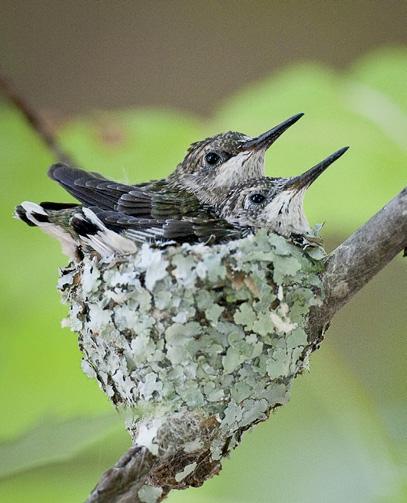
our dense woods.
Nests can be anywhere from a few feet to 50 feet in the air and are almost always on a downward sloping branch. They blend into their surroundings very well, being constructed of soft plant fibers, covered in a layer of lichens and bits of moss, and held together by spider silk. The nest walls are pliable and flex as the young birds grow and move around. The female does all the work of nest building, incubation of her eggs (almost always two) and rearing of the young. Adult birds feed on nectar from a variety of native and non-native flowers, with tubular red flowers being a favorite. Studies have shown they also eat a large quantity of tiny insects and spiders. Females regurgitate their food to the young in what appears to be a not-so-loving manner: by inserting her bill into the open gape of the young and pumping vigorously (apparently young hummingbirds have no gag reflex).
Females in our region may have two broods, with the last one occurring in late July or early August.
Ruby-throated Hummingbirds are certainly one of the most-watched birds in our state given the huge number
of feeders placed out for them every summer. The standard formula for creating your own hummingbird food is to combine one-quarter cup of refined white sugar in one cup of hot water until the sugar is dissolved. (Do not add red food coloring.) Keep your feeders cleaned regularly by washing with hot water and a brush. In hot weather it is best to change your feeder solutions every couple of days, although I usually don’t need to worry about that because the birds drain the feeders quickly. I start with one feeder in April (the males are the first to arrive and set up territories in the spring), add more as the females arrive and finally have four up in the yard when the young start leaving the nests. I place the feeders so they are far apart, and some are visually separated from each other around corners of the house. This seems to help reduce the dominance of the feeder by a particularly aggressive hummingbird. It also helps that our place has a wide variety of native plants for their dining delight. Favorites include Coral Honeysuckle, Bee Balm, Jewelweed, Eastern Red Columbine and Cardinal Flower.
A favorite hummingbird encounter
happened two years ago when I went out to bring in a feeder for a cleaning and refill. The ruby-throats frequently zoom close when I am putting up or taking down feeders, but this time, as I grabbed the feeder and lifted it off the hook, a hummingbird landed and started feeding. It was an immature male that occasionally glanced my way as I stood there with the bird at arm’s length. They usually only stay a few seconds at a feeder, but this one kept on, so I slowly pulled the bird and tube closer. I finally had it about 8 inches from my face! What an incredible experience. He finally streaked off (my arm thanked him) when another adult male came in for a challenge. The aggressor veered off when he realized there was a new gray-haired hanger for the feeder.
While that was a very special moment, my mom recently shared one that tops it. She loves to sit on her front porch in the evening and watch the hummingbirds as they contest the air space around her feeder. She happened to glance down and saw that one had landed on her knee and was just taking it all in. She said it sat there for several
seconds until she accidentally moved her leg and it zoomed off.
And zoom they do! Here are a couple of fun facts about hummingbird flight: Hummingbirds can fly forward at speeds up to 50 miles per hour. The number of wing beats is also impressive — 40 to 80 beats per second! And while most other birds fly by generating lift on the downstroke of the wing, hummingbirds don’t strictly flap but rather rotate their wings 180 degrees with each wingbeat. This can generate lift on both sides of the wing, allowing them to hover, fly backward and even upside down briefly. Another very noticeable thing about these marvelous birds are the bright flashes of red on the throat of the males. These flamboyant feathers are called a gorget (pronounced gor-jit), named after the protective metallic throat collar worn in days of yore by a knight-inarmor. Unlike the brilliant red feathers of a cardinal, which are colored by a
pigment, the male hummingbird’s red feathers are the result of iridescence. Microscopic grooves and bubbles on the feathers cause light to reflect and refract off of them, making the color you see change depending on the angle you view it. In some angles, the throat looks dark, even black. But a slight turn of the head and you see a fiery red flash. Male hummingbirds use this flashiness to attract females and to warn off potential rival males.
The adult males will soon start leaving for the wintering grounds in Mexico and Central America. Over the next several weeks females and young (males look like females their first few months) will follow, and our yard will once again lack the energy and excitement of their presence.
But some lucky North Carolinians have hummingbirds even in winter. Susan Campbell, a friend and research associate at the NC Museum of
Natural Sciences, has been involved in a study documenting and banding hummingbirds in our state for over 20 years. Her research is now under the auspices of the Cape Fear Bird Observatory, and what we know about winter hummingbirds in our state is largely due to her work. To date, 11 species of hummingbirds have been observed in winter; they often spend the entire winter in one location, and some have returned to winter at the same place year after year. Most, other than the Ruby-throated Hummingbird, are winter migrants from western states, the most common of these species being the Rufous Hummingbird (any hummer in your yard with a brown back is a male Rufous).
So while you can expect the most hummingbird activity this time of year, consider maintaining your feeder through the winter — you just may end up with a special guest.
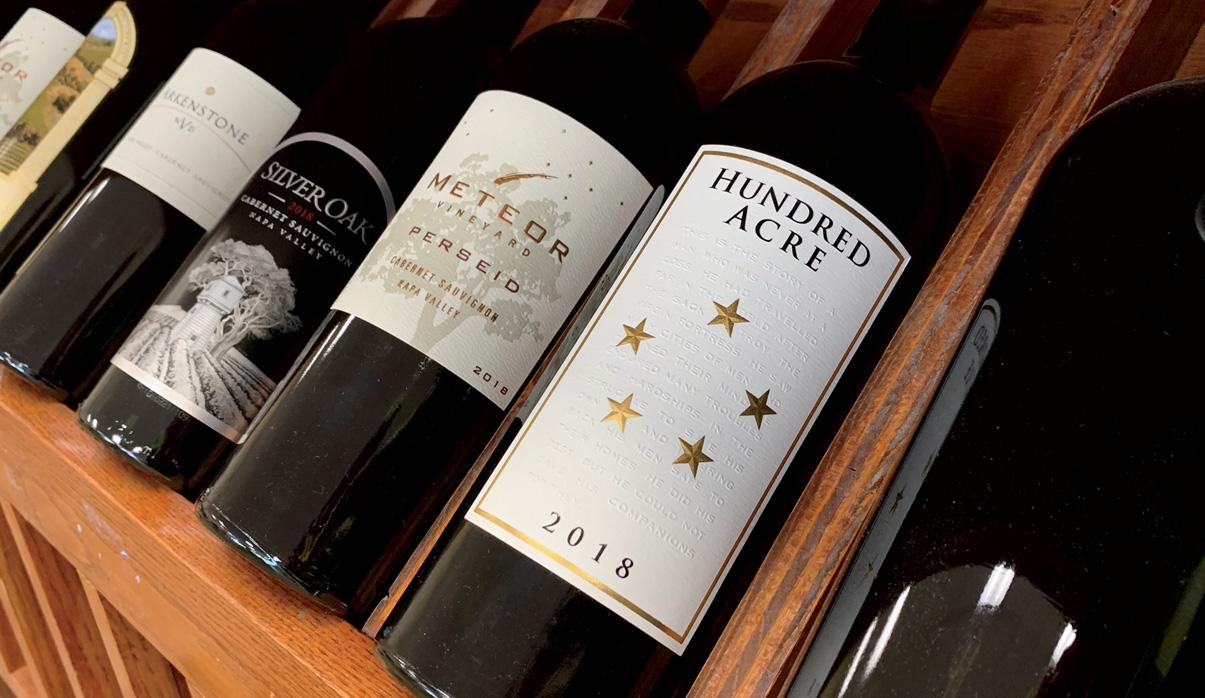

AUG 3 Mark Herold portfolio tasting AUG 7 Italian summer sippers with Laurence Vuelta
AUG 15 French wines with importer
AUG 17 Champagne and sparklers with John Lambrakis
AUG 24
Paolo Pellizzari
AUG 31 The Judgment of Raleigh: SEP 13 Wine dinner with Triangle

I’ve made a living out of writing about music, and, especially over the last few years, digging into its history. I’ve come to learn that anyone who does historical research stands on the shoulders of those who came before, especially when it concerns events of long ago.
Over the five or so years that I was actively researching Step It Up and Go, a history of North Carolina music that was published in 2020, I worked with scores of people who were immensely generous in sharing their knowledge of events that happened before I was even born.
But I also encountered a few folks who were, shall we say, territorial. In particular, I remember one individual who had been researching the 1930s-vintage Piedmont blues scene in Durham — the subject of my book’s second chapter.
This particular person had been doing interviews and research long before I got to North Carolina, and she had plans to write her own book someday. She was extremely helpful at first, sharing some key documents about one of that era’s most interesting figures, J.B. Long. Long was a store manager who ran a freelance recording operation in Durham in the 1930s.
Among the musicians he recorded was the legendary Fulton “Blind Boy Fuller” Allen, a now-legendary figure (and the author of the song that would become my book’s title).
Although Long died in 1975, his grandson was still around when I was researching my book in the late 2010s. But this other person had already interviewed him about his grandfather and asked him not to talk to anyone else, including me. Since she had gotten to him first, she felt a sense of ownership of J.B. Long’s story.
“She feels she has put great effort into this endeavor and asked that I not speak with you,” Long’s grandson told me. “I feel between a rock and a hard place, as I have been working with her for years. However, I have no idea when and if her book will ever come out.”
I was reminded of this situation recently while reading a great new book, Biography of a Phantom by the late Robert “Mack” McCormick. The title could refer to the author as much as his subject. Subtitled “A Robert Johnson Blues Odyssey,” it’s an ambitious work about the mysterious life, death and music of the Mississippi blues legend whose heyday was about the same time as Durham’s Piedmont blues peak.
Based in Texas, McCormick was a writer and researcher with an affinity for the blues, as troubled as he was brilliant. It was the 1960s and early ’70s when he took up the story of Johnson, a musician whose work has inspired generations of blues and rock musicians. Before Johnson’s 1938 death at age 27 (reputedly poisoned by a jealous husband), the musician wrote and recorded blues classics still heard and widely covered today — “Cross Road Blues,” “Hellhound on My Trail” and “Sweet Home Chicago” among them. The oft-repeated legend was that Johnson had traded his soul for supernatural playing ability in a deal with the devil.







Convinced that rivals in the world of music folklore were going to steal his research, McCormick became a thief himself, making off with a rare photograph of Johnson that he stole from the bluesman’s relatives.
Even though Johnson had been dead and gone for more than three decades, McCormick knocked on enough doors in Mississippi to track down many of his acquaintances and even relatives. He pieced together a credible version of his life and how he died.
The story turned weird and ugly when McCormick succumbed to mental illness and paranoia. He wrote a draft in the early 1970s but could never bring himself to finish it, instead continuing his research. Convinced that rivals in the world of music folklore were going to steal his research, McCormick became a thief himself, making off with a rare photograph of Johnson that he stole from the bluesman’s relatives.
As years turned into decades, McCormick’s Johnson book never appeared — even as his massive research archive, dubbed “The Monster,” grew in size. He even took to inserting fictional red herrings into his own research notes, deliberate falsehoods that would reveal anyone else who tried to use his information without autho-




Shake Shack | Capriotti’s Sandwich Shop
BodyLase | Hollywood Feed | L.A. Bikini
Rocky Mountain Chocolate Factory
ONYX Hair Boutique | vomFASS | The Joint
Taziki’s Mediterranean Cafe | MOD Pizza
TASU Asian Bistro | CorePower Yoga
Chicken Salad Chick | DryBar | StretchLab
302 Colonades Way Cary, NC 27518 (919) 859-5818 Visit WaverlyCary.com for





rization (such as a claim in later years that Robert Johnson was actually from Texas, not Mississippi). McCormick died in 2015, his masterwork unreleased. McCormick’s monster archive now resides at The Smithsonian in Washington, D.C. The museum commissioned curator John Troutman to pull Biography of a Phantom together from his draft and notes. The book has an introduction and afterword covering McCormick’s story. But the part of the book that tells Johnson’s story, based on McCormick’s research trips through Mississippi, is fantastic — equal parts biography, murder mystery and cautionary tale. It’s readable enough to be a solid summertime beach book, but it also holds up as history and musicology.
Reading McCormick’s book, and noting the sense of ownership he felt over Johnson’s story, had me reflecting on my own efforts for Step It Up and Go. I finally convinced J.B. Long’s grandson to talk to me, despite the other writer’s objections. He even provided a wonderful 1930s-vintage photo of his grandfather, which helped personalize this history (see previous page). Meanwhile, that other writer’s book never appeared, and she passed away in 2019. I hope her research is now in the hands of someone who might publish it, and I am still grateful for her help with my own book.
But it made me wonder: When it comes to this kind of music writing and research, who “owns” the story — the first person to uncover it, or the one who’s most likely to bring it to light?
I don’t have a good answer.
Top: Menconi’s desk full of research. Left: Biography of a Phantom by Robert McCormick.




Ski Packages available in France, Switzerland, Italy, Japan, and the US
(all-inclusive — food, drink, hotel, lift tickets, airport transfers)








Golf Packages available in Florida, Dominican Republic, Mexico
(all-inclusive — food, drink, hotel, green fees, cart, airport transfers)









Find these and many more Home Town brands at your local Harris Teeter Bringing it home since 1960
Harris Teeter is proud to support more than 500 local businesses with 1,500 plus products in our stores from Charleston, South Carolina to Bethesda, Maryland. We share in your passion to buy local, and when you do, you’re not only buying from them but supporting your community as well. After all, that’s what Home Town spirit is all about!

Infrastructure inspires Matthew Steele. Bridges, highways, architecture and other physical manifestations of technology demonstrate to this Charlotte artist the lengths human beings will go to “transcend the greatest obstacles we know.”
With honed precision, Steele’s work explores the elegance, complexity and rigor of such industrial and manmade structures, the labor that made them and the life they each contain. The still rotors of a turbine become a thrumming work of abstract beauty when Steele makes them of wood and copper. He allows them to hang alone, the promise of movement in every blade. Steele’s scaffold-like towers of walnut merge to create a geometric, jagged skyline, but with an irregular, tendriled base: Are they putting down roots? Are these structures not built, but alive?
“There is desire in a highway,” Steele says. “There is triumph in a bridge.” Steele moved to Charlotte in 2012 for a McColl Center residency and has made the city his home. “I’ve always been interested in the manufactured world,” he says. “I came from a super small town in Indiana. I knew the feeling I had when I would go to a city or a large industrial space, and just how alien it felt. I think I’m still narrowing in on that feeling.”
In 2015, Steele became an artist-inresidence at Goodyear Arts, a nonprofit arts program in Charlotte. This allowed him to further explore that feeling and its embodiment in his work, which has been exhibited and collected internationally. Steele and his wife, Susan Jedrzejewski, associate at Charlotte’s Hodges Taylor Gallery and a former codirector of Goodyear Arts, live in a home with a 2,000-square-foot walkout basement that serves as Steele’s studio. This is where he makes the work that fuels his creativity. “There’s something incredible about waking up and making something,” Steele says, “of walking downstairs and turning on the

table saw.” At the end of the day, Steele says, nothing can compare to the satisfaction of that kind of work: “Something can exist that didn’t exist that morning.”
Most of the time, that something is made of wood, and usually, that wood is walnut. It’s the wood he first learned to use many years ago when his father brought home a huge supply, and still, no other wood compares. “It’s pretty forgiving,” Steele says. “It has a quality that feels special. I’ve created the deepest relationship with walnut.”
It’s this richly colored, earthy-scented material that forms the work inspired by steel buttresses, by engine components, by industrial infrastructure. To Steele, that paradox points to a larger message. “I remember a thought I had in college about people in the world that we build,” he says. “It’s so easy for us to think of us as separate from nature, but we make our beehives, and we make our own beaver dams. We’re just animals.”
In Charlotte, Steele is making his mark. Last year, he received an Emerging Creators Fellowship from the Arts & Science Council, and he is currently at work on a major piece of City of Charlotte-funded public art that will anchor a streetscape project on J.W. Clay Boule-
vard in the University City area. Making public art — which has kept him busy in recent years — is the realization of a long-held goal. In 2019, after a series of rejections for proposals he’d submitted for public art commissions, Steele decided to make a work of art to please himself: “I just thought, Nothing is working. I’m just going to make whatever I want.” He took the form of the historic Greek statue The Winged Victory of Samothrace as inspiration and “depicted that idealized sculpture as this sort of grim, dark oil-covered mess.” The resulting (Nothing is Working) Victory is a metal form that recalls the iconic sculpture’s shape, but is built using intersecting pieces of metal, held up on a wooden trestle. The process taught him to make organic, volumetric shapes he hadn’t been able to create before. A few weeks later, Steele got his first call to make a piece of public art — one that called on his newfound skill.
Guaranteed funding, a larger scale, a public audience and a sense of permanence make these commissions particularly prized. But the making of a piece of public art can become weighed down in procedure — paperwork and correspondence and engineering — that

can remove an artist from the creative process. “It’s a tricky transition,” Steele says. “You’re using new materials, on a completely different scale.”
Schematic depictions of Fabric, the piece he’s currently working on for the City of Charlotte, clearly share the elegance, energy and story of his studio work. Before submitting his proposal for the commission, Steele researched the industrial history of the area and became inspired by the early-1900s textile mills of the NoDa area. “I found old photos from the archives, images of factory rooms with thousands of spools of thread,” he says. “I just couldn’t get over the visual, all of these threads coming through.”
He began to experiment with steel rods and developed the design for what will become a 10-foot-tall, 6-ton piece of steel rods. Slated to be installed in 2026 on a median in J.W. Clay Boulevard, the piece of art will be a sort of pyramid of rebar, where slivers of daylight will shift with the movement of a viewer.
“Public art is really, really exciting,” he says. “You get to do something you wouldn’t do any other way.”
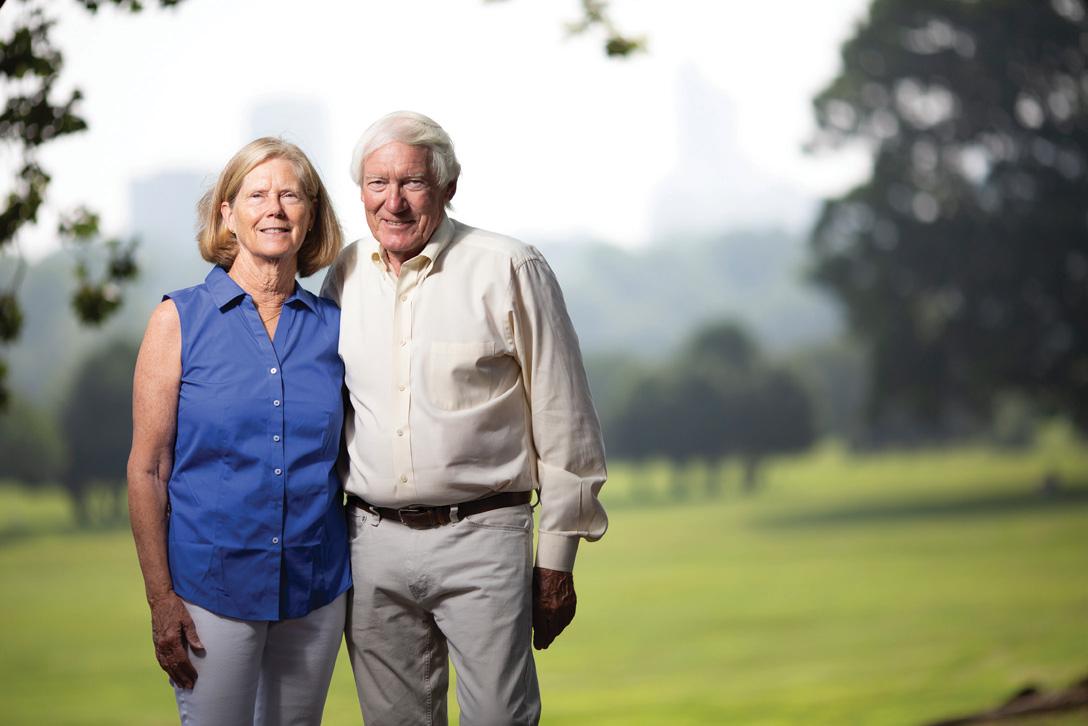
The greeting is short and sweet: “I’ve got something to show you,” says Tom Gipson. As I step into the living room of his North Raleigh home, he grabs a remote control and aims it at the television. I sit next to him on the couch; Pat, his wife of 36 years, settles into an armchair at his other side.
A sunflower bursts onto the screen, in full bloom against a clear-blue sky. He explains that it’s the inspiration for a project in the works: a pair of Sunflower Powerline Poles along Lake Wheeler Road. Each of the 73-foot poles will be topped with 48 steel petals up to 10 feet long, signaling the entrance to the forthcoming Gipson Play Plaza, an 18.5-acre public space with a swing terrace, sensory maze, water play
mountain and playground, in addition to fountains, gardens and a café, expected to be completed next year.
Gipson hopes the Sunflower Powerline Poles will become “an iconic statement for Raleigh.” The plaza will be named for the Gipsons in honor of the couple’s 2021 gift of $10 million to the Dix Park Conservancy. “We are very excited about Dix Park,” says Tom. “No major city has a piece of land like this available this close to the city center.” This gift could also be considered an iconic statement of the couple’s commitment to reinvesting in Raleigh — and a departure from the quiet nature of their decades of philanthropic efforts.
The Gipsons built their wealth through a mix of hard work, smart investments and modest living. Tom founded Thomas

Gipson Homes in 1976 and quickly distinguished himself with a more contemporary building style — cathedral ceilings, lots of glass, open living areas — as an alternative to the traditional two-story home. By the time Tom retired in 2015, the company had built around 1,000 homes in Wake County, mostly in Raleigh and Cary, and was quite successful.
Building on that success, he and his wife have invested all profits into stocks. “I made a fortune in the stock market,” says Tom, noting they leaned toward value-based stocks and invested in “hundreds of them, not just one” over the years. He and Pat also live modestly. “Our parents went through the Great Depression. They were always frugal — and so were we,” Pat says. They built the house they currently live in back in 1981 and raised their five children there. Each
of their kids went to Raleigh public schools.
“I’m not sure anybody knows the extent of Tom and Pat’s philanthropy. So much of it is under the radar because, for so long, they’ve avoided the limelight. They have given away millions of dollars, but they’ve done so quietly, in the shadows.”
— Carlton Midyette
Tom founded the Gipson Family Foundation in 1979 as “a more effective way to make charitable contributions and keep them separate from personal financial stuff,” he says. Each year, the couple uses their foundation to donate to at least two dozen organizations in Raleigh, including CASA, Communities in Schools, Families Together and Oak City Cares. “Part of our thinking is that the basis of our wealth is from Raleigh, so we focus our giving on Raleigh-based initiatives,” says Tom. “We want to create more opportunities for people to thrive.” Pat adds: “It matters! It’s one of the reasons we support education so much, too — let’s give everybody a chance.”
That’s the philosophy both she and Tom grew up with, Pat says. “Both of us were raised to believe that if you have
something you can give, it’s your obligation as a human to do something to help them,” Pat says.
“I’m not sure anybody knows the extent of Tom and Pat’s philanthropy,” said Carlton Midyette, a longtime friend of the couple. “So much of it is under the radar because, for so long, they’ve avoided the limelight. They have given away millions of dollars, but they’ve done so quietly, in the shadows.”
Alex Holmes, who in 1990 founded Wake County Communities in Schools to help students access the tools they need to stay in school, agrees: “They’re amazing folks; very humble, compassionate about the causes they support, and very creative in how they engage others in supporting their causes.”
There have been some splashier contributions: in 2002, Tom started the Home Builders Blitz program through the Wake County Habitat for Humanity. He challenged 11 other builders to join his company to construct a dozen homes in five days to help give families more affordable housing options. “It’s important to put children in stable housing,” Tom says. “It changes their lives, and the lives of future generations.” The following year, 24 homes were built in Raleigh. Tom helped expand the weeklong blitzes to Habitat chapters nationwide. In 1988, that work won him The View ’s Ultimate Volunteer award, recognizing a person who goes above and beyond to help others. “The impact the Gipsons have had with Habitat for Humanity Wake County is one reason the Wake County affiliate is one of the largest in the country,” says Habitat CEO Patricia Burch.
The Gipsons have had a large philanthropic footprint at the North Carolina Museum of Art, too. There, they’ve introduced to the museum park a wall of pottery and the artwork of Jeppe Hein. Coming soon: two interactive art installations by Montreal design studio Daily tous les jours, called Musical Swings and Daydreamer Benches, that invite people to make music together as they sit or swing on them. Raleigh’s 10-seat Musical Swings will be only the second permanent installation in the country. “We are thrilled we’re able to get one for the museum,” Tom says.
In addition to investing in Raleigh, the Gipsons have been working to raise their kids “in the spirit of giving,” Tom says. The couple allocates money every year for each of their children “to direct where they think it’s best needed.” Their son Donald, for example, founded an English-language school in Mexico and invests in an organization that helps build infrastructure in impoverished areas within his community. “I have models who have done amazing things that have impacted thousands of lives,” Donald says. “My parents encouraged all of us to explore the world and find where we can make a difference.”
The Gipsons’ example is “wonderful to watch,” Midyette says. “Tom and Pat have been making Raleigh institutions better for a long time, and they’ve done it largely behind the scenes. Raleigh is lucky to have them.”
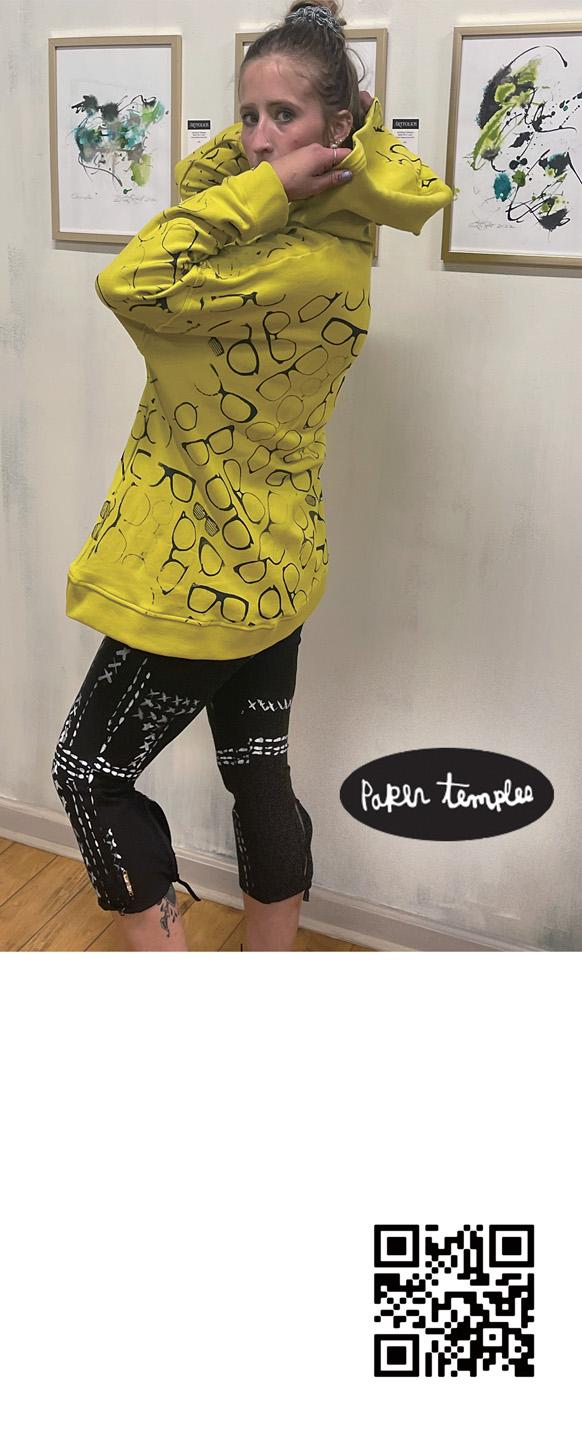



During a business trip to a remote part of New Zealand last winter, I was reminded of the staggering beauty of the night. Stepping out of my bungalow just after midnight, the stars of the Southern Hemisphere took my breath away. There were millions of them arching overhead, blazing like white diamonds on black velvet.
Because it was summer down under, there were also vivid sounds of calling night birds and insects murmuring in the fields and forests around me. I sat down on a wooden rocking chair and just
listened for the better part of an hour, a perfect bedtime lullaby that reminded me of my daily wake-up routine back home in North Carolina.
Well before sunrise most days, I take my coffee outside to sit beneath a grove of old trees and wait for the first songbird to herald the breaking day. Save for an occasional passing train or distant siren that briefly mars the silence, it’s the stillest part of any day, the perfect moment to think, meditate, pray or just be.
I’ve captured the first birdsong many times on my handy Cornell Lab Merlin Bird app. In my neck of the suburban
woods, it’s usually a Carolina wren or eastern towhee that breaks the predawn serenity. Sometimes it’s the northern cardinal or melodious song sparrow that takes a lead solo. Every now and then, a great horned owl or brown thrasher cues the chorus. Whichever one starts, as sure as night is dark, a chorus of a dozen or more birds soon join the songfest, including gray catbirds, mourning doves and American crows.
I never tire of this avian awakening, finding a sense of true gratitude for my tiny spot on Earth as a new day begins. And yet, I worry.
Last year, a report from National Audubon noted that the U.S. and Canada have lost 3 billion birds over the past half-century, and that half of America’s bird populations are in decline. More than one expert warned that we are already in the early throes of the Earth’s sixth mass extinction.
Global warming, loss of natural habitat, various forms of pollution and the fact that the night is no longer as dark as it used be are cited as primary contributing factors to the decline of thousands of species of birds, insects, reptiles and mammals, roughly half of which hunt, mate, feed and travel by night. Disappearing forests accelerate this decline.
So what is an ordinary, suburban nature-lover and bird nut to do? That depends, I suppose, how you grew up. I sometimes joke that I grew up in darkness. I had the privilege to grow up in a succession of sleepy Southern towns, following my dad’s itinerant newspaper career. From the coast of Mississippi to the Carolinas, with an imagination fired by nature, I explored woods and creeks, bringing home frogs and injured birds. The rule was I had to be home by “full” darkness. Many an evening, I lingered in the twilight just to watch the fireflies come out and listen for the sounds of crickets, bullfrogs and night birds. In those days, the streetlights in these quiet rural towns were few.
Thirty years ago, in an effort to give our children the benefits of a quieter, natural world, my wife and I built our house on a coastal Maine hilltop surrounded by a dense forest of beech and hemlock, where the nights were deep and woods teemed with animal life.
The first thing I did when we moved back to my hometown neighborhood seven years ago was plant 20 trees around the property. Today in summer, our house sits in a grove of beautiful trees. In our neighborhood, giant oaks, maples and poplar trees arch like druid elders throughout. These trees provide home to a rich variety of birds and insects. They also give us welcome shade in summer and showcase the stars on winter nights.
Turning down the lights at night strikes me as one small but sensible act of kindness to nature, encouraging the living world around us to rest so moths and other nighttime creatures can pollinate plants, fertilizing the start of the world’s food chain.
In her lovely spiritual memoir Learning to Walk in the Dark, theologian Barbara Brown Taylor points out that most of the monsters we fear in the dark are simply phantoms we create in our anxious, sleep-deprived minds.
I never tire of this avian awakening, finding a sense of true gratitude for my tiny spot on Earth as a new day begins.
I’m not speaking, mind you, of the metaphorical darkness showcased by everything from the Bible’s rich imagery of light and darkness (good and evil) to modern cable TV’s endless news loops of crime and disaster. There’s a good reason why depression is called a “dark night of the soul.” Anyone who has experienced it might be forgiven for believing that the world is coming apart at the seams.
“I have learned things in the dark that I could never have learned in the light,” she writes. “Things that have saved my life over and over again, so that there is really only one logical conclusion. I need darkness as much as I need light.”
I was reminded of this fact one morning at summer’s beginning while awaiting my woodland wake-up call. Savoring the predawn stillness beneath the trees, I suddenly realized that the fireflies had returned, magical messengers of hope that would be nowhere without the night.
As August passes over us and the days grow shorter, the darkness grows.
I say, bring it on, dear neighbors, and sleep well.














In my late 30s, I hurt my knee playing indoor soccer. This was a blow: From travel teams to my high school team to college intramurals and pickup games as an adult, I’d been playing soccer for decades. It was the center of my exercise and social life. I’d played on many fields, met many people — some of whom are now my best friends — and shared many pints after matches.
But my doctor said I should only run and bike — activities where you move forward in a straight line. Both were sports that involved a lot of solitude and
individual motivation. I did them somewhat begrudgingly.
Then, on a trip to visit family in Massachusetts last July, I discovered pickleball. (I’d seen it before: many years ago, my family stumbled into Worthdale Community Center and saw senior citizens playing a new paddle game in the gym. We’d asked about playing, but we would’ve had to rent paddles, and the courts were all full.) My brother-in-law had been playing for years, and I was recovering from Covid and needed to socialize outdoors for the remainder of my quarantine. He
volunteered to teach me the game. It came pretty naturally, a credit to growing up playing tennis, as well as many ping-pong games in friends’ garages and breweries over the years. It felt like the perfect mix of these two sports. We played in the 90-degree heat as I adjusted to the new rules, equipment and court. The ball is lightweight and plastic, sort of a hard version of a wiffle ball; the paddles are hard and bigger than pingpong paddles. There’s an area close to the net called the “kitchen,” or No Volley Zone, where you can’t (ahem) volley the
ball. Short shots are called “dinks.” Similar to tennis, the game has a side-out scoring system, which means you can only score a point when you are serving. Lots to learn!
But after one game, I was hooked. We played several more times on vacation, and I bought a few paddles and balls. My wife and kids got into it as well. When we got back to Raleigh, I researched public courts and learned about two locations close by, at the North Hills and Method Road parks.
I was nervous the first time I approached the packed North Hills court. I knew no one and barely knew how to play the game. There was a mysterious system to get into a game that I didn’t understand — racks with color-coded slots for paddles. Luckily, some regulars explained it to me, so I popped my paddle into a slot and got ready for my turn.
Everyone had a smile and was willing to play with a stranger. The first few games were fun, even though I’m sure I made several mistakes.
my phone to find courts when visiting a new state or city. I watch professional tournaments online and even traveled to Charlotte for finals day of the Professional Pickleball Association tournament. In May, I worked with Artsplosure to put up three temporary pickleball courts in City Plaza featuring murals painted inside the kitchen. For the entirety of the two-day event, the courts were packed with newbies, families and regular players.
I know my obsession is just part of a nationwide phenomenon — ESPN, Amazon Prime Video, CBS and more have signed up to air tournaments live, local tournaments are constantly popping up and many more pickleball courts are planned in the area.

I needn’t have worried: From the moment I stepped onto the courts, I was immediately welcomed. Everyone had a smile and was willing to play with a stranger. The first few games were fun, even though I’m sure I made several mistakes.
One year later, I’m one of those regulars. I’m at North Hills several days per week, playing with whoever shows up — partners that range in age from 10 to 76 with all genders and races in between. (Once, a nun in a full habit was a challenger on the court.) I lose myself in the game on the regular, playing for hours at a time. We joke that “One More Game” is the sport’s unofficial motto. My wife and our son have gotten more into it, too, and I’ve even played several amateur tournaments with a partner I met on the court.
When I’m not playing, I’m on text chains, group chats, Facebook groups and email newsletters. I have apps on
I think I know why: Pickleball is more than just a fad sport. It’s a cultural catalyst. I’ve never seen anything quite like the democratic, impromptu and cooperative aspect of the game. It’s like pick-up basketball, but accessible to more age ranges and skill levels. Pickleball offers something we can all use more of in our lives: friends, exercise and, more than anything, community.
If you’re ever in need of a partner to hit the courts, I’m always up for one more game. We like to socialize. Follow along and don’t miss a thing.
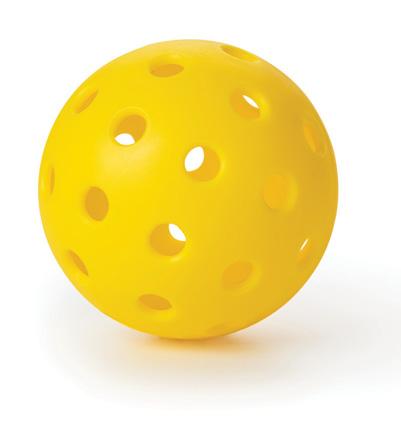
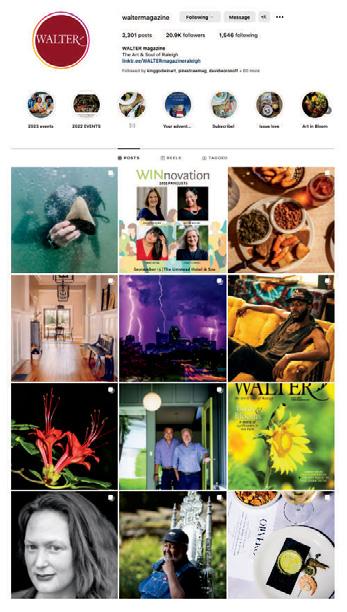







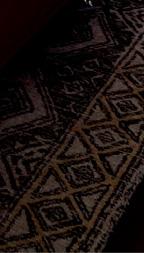

 by PAT RIVIERE-SEEL
illustration by MARIE-LOUISE BENNETT
by PAT RIVIERE-SEEL
illustration by MARIE-LOUISE BENNETT
Let’skeep overthinking, he says. Too late for that, I think, but do not say. Let’s lie down in the dew-damp grass, become shadows stretched into dreams. Let clouds cover doubt. Do you want to spend this moment thinking or holding hands, skin to skin. Feel the heartbeat from the roots of ancient pines. Two bodies, one soul. Taste the mystery of deep kisses, the world we know alive without thought. The world we know alive. Without thought, one soul. Taste the mystery. Deep kisses from the roots of ancient pines. Two bodies, hands, skin to skin. Feel the heartbeat, spend this moment thinking. Or holding. Let clouds cover doubt. Do you want to become shadows stretched into dreams?
Let’s lie down in the dew-damp grass. It’s not too late for that, I think, but do not say. Let’s not overthink, he says, keeping close.
Pat Riviere-Seel is the author of four poetry collections. The Serial Killer’s Daughter won the Roanoke-Chowan Award. She is a former journalist, publicist, editor, teacher and lobbyist. Her latest poetry collection is When There Were Horses. Learn more at patriviereseel.com.
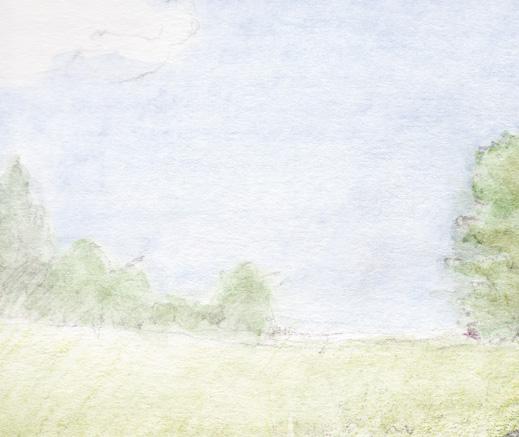

BREAKING BREAD
Scenes from the new Boulted Bread location on Dupont Circle. Here, Joshua Bellamy and his team offer a range of artisan-made breads and pastries, as well as coffee and espresso.


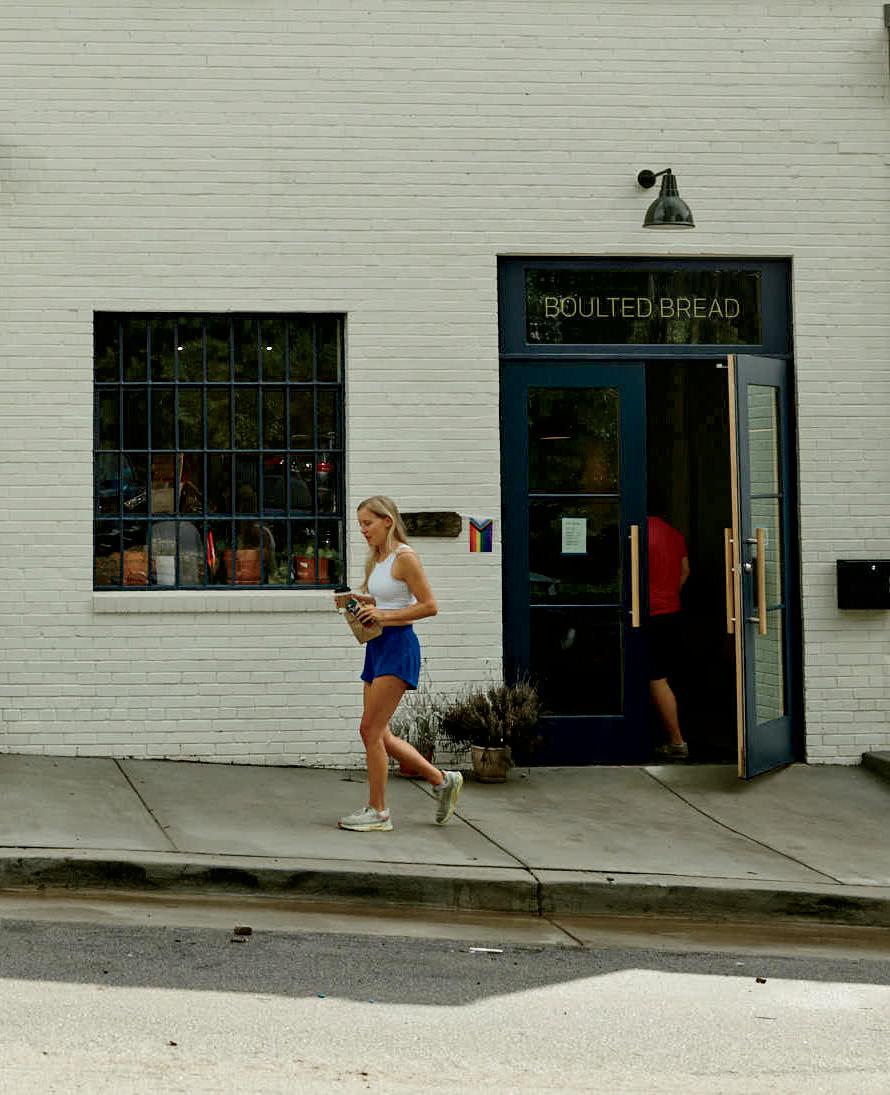


Savoring summer at Boulted Bread’s new location

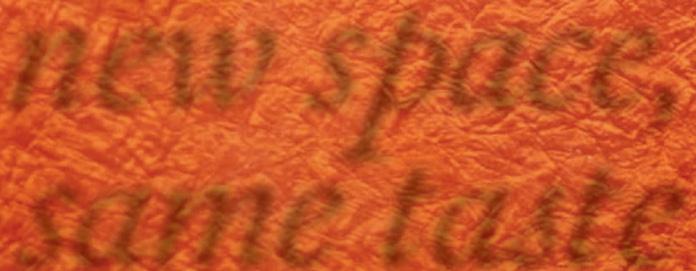
Over nine years, Boulted Bread built up a cult following with its delectable baked goods and old-school, small-town feel. In May, it moved into a larger location — but folks will be relieved to hear that the menu is the same.
You can still pick up a hearty levain, chewy ciabatta, rustic baguette or a grits bread. There’s the Everything Croissant, a flaky, layered indulgence filled with cream cheese and topped with sesame seeds, garlic flakes, salt and onion powder. The Morning Bun offers a citrussugary twist on a cinnamon roll, sans icing. “There’s never been a month that the Morning Bun hasn’t been a top seller,” says Sam Kirkpatrick, one of the owners.
Boulted Bread was founded in August 2014 by Joshua Bellamy, Kirkpatrick and Fulton Forde, all Raleigh natives. Bellamy is the lead baker and comes up with the recipes, and Kirkpatrick “does everything else,” Bellamy laughs. “He’s the liaison with the outside world.” (Forde has since retired but still keeps in touch.)
After first discovering baking as a hobby, Bellamy completed a 15-week culinary baking program at the former New England Culinary Institute in Vermont. He went on to intern at Elmore Mountain Bread in nearby Wolcott. “It was a quintessential Vermont bakery with a woodfire oven, on 10 acres of land out in the middle of nowhere,” Bellamy says. “It was so small, I got to do everything from mixing to shaping to baking, every day.”
Eventually, Bellamy made his way back South and got a job in the bakery department at Weaver Street in Carrboro. There he had more coworkers and baked a lot more bread daily, but they still valued the integrity of ingredients, like locally milled, all-organic flour.
The three connected one weekend in Asheville at a bread festival. Forde and Kirkpatrick were drumming up plans to open a bakery in Raleigh and brought Bellamy on board. Together, they rented a small space on South Street. “We barely had a business plan, barely any money, and old equipment that needed tinkering and maintenance. We did nothing the right way, but it just worked out,” says Bellamy. There was space for eight seats, and most of their business was takeout; it wasn’t uncommon to see folks lined up at 6:45 a.m. on the weekends to be sure to get their favorites. Boulted caught the attention of publications including Bon Appetit magazine and The Washington Post.
But as its following grew, the shop hit max capacity. “Our pastry oven broke once every six months, the HVAC system was underpowered — everything that could go wrong went wrong, but we managed to stay open,” says Bellamy. They started looking for a new location a few years ago and found the perfect upgrade just a few blocks away on Dupont Circle. “We got to stay in the neighborhood and build out this big, beautiful bakery!” says Bellamy. “We worked really hard, but there’s been a tremendous amount of luck and privilege.”
and Facebook Marketplace. The wood for the benches came from their old space, and folks still mourning the loss of The Alley on Hillsborough Street will recognize its chairs in a back corner. There are fresh flowers on the tables and coffee is served in antique mugs. Local artist Chris Wilcox made a metal wheat strand to hang above the mill. “We wanted to honor the experience that all of our customers had on South Street with something familiar,” says Kirkpatrick. “People are comfortable being here.”
Danielle Teed is one of those customers. She frequently bikes over to Boulted with her husband and children. “It’s so bright, and the kids love to see all of the baking magic happen,” Teed says. “And finally, an espresso machine!”
“My family comes here, and so do my friends from high school. This community raised me, and now I get to bake for them.”
— Joshua Bellamy
Beyond that, “our menu hasn’t changed at all and I don’t think it ever will,” says Bellamy. That said, he does introduce a few new things each season. “We love to maximize fresh Carolina produce,” says Bellamy. For summer, they’ve got a Tomato Tartine (a hearty piece of levain topped with thick-sliced heirloom tomatoes, cheddar, Duke’s mayo, salt and pepper, all melted together) and a Summer Tart (okra, sweet corn and squash, plus pesto, feta and a little savory custard, within a buttery cornmeal crust). There’s also a sweet, glossy Peach Tart when the fruit is at its peak.
The new 5,000-square-foot space is open and airy and seats about 30 people. Boulted is now up to 22 staffers; customers can watch bakers knead bread and put it in the oven, as well as see the mill in operation. The vibe is industrial and eclectic: Kirkpatrick furnished the seating area with finds from vintage shops
While opening a new shop is never totally smooth (“There have been some little bumps,” admits Kirkpatrick), getting settled into the new location has been a full-circle moment for Bellamy. “My family comes here, and so do my friends from high school,” he says. “This community raised me, and now I get to bake for them.”

The dining area of the new Boulted Bread location (above). The Tomato Tartine is a favorite summer offering; it features hearty levain and heirloom tomatoes with melted cheddar cheese.




On the shelves of Boulted Bread, customers see the ingredients on display, as well as goods like the Peach Tart, Pain au Chocolate and various breads. Opposite page: Joshua Bellamy.
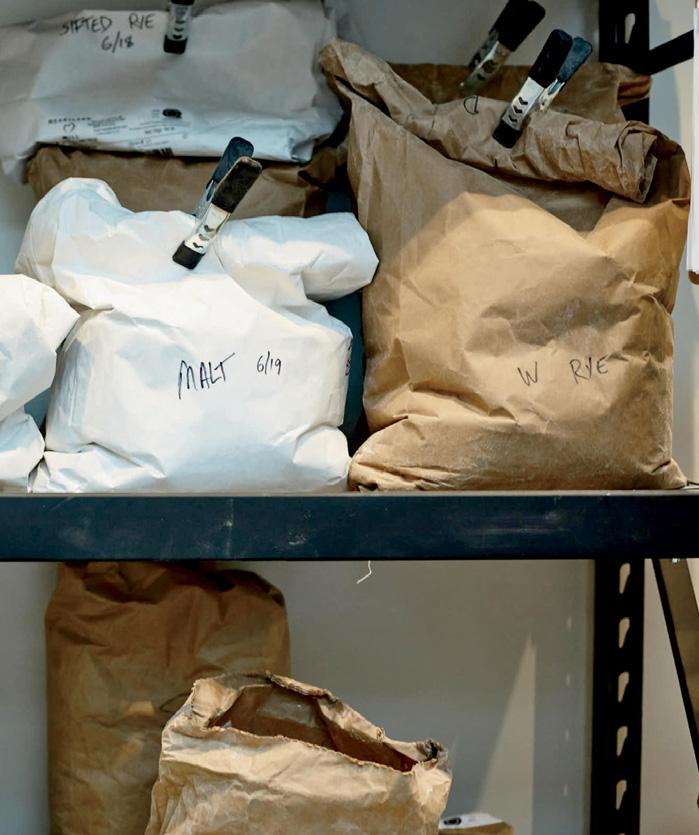


Shaping a garden with an engineer’s mind and a farmer’s touch


Effie Underwood’s garden combines the brain of an engineer with the ethos of a farm. “My dad and all of his family are dirt people — ingrained, forever farmers. I was born with that as well,” she says. Underwood grew up in the low country of South Carolina and attended a small women’s college there. She started out studying art but switched to a math major when she realized that it would lead to more career opportunities. “So I guess I have both the figure-it-out mentality and the creative piece,” she says.
Underwood moved to Raleigh in the 1980s and worked for a long time as an engineer for AT&T. She took a buyout in the early 2000s and ran her own garden business for about a decade, then went back to work as an engineer. During her hiatus from engineering, “I took all the garden stuff I could find,” she says, including classes through organizations like Duke Gardens and the JC Raulston Arboretum; she also joined Wake County’s Master Gardener program. “I wanted to learn from all these community resources to better understand and do more with my passion for plants,” she says.
On her 2.5-acre plot in North Raleigh, off Six Forks Road, she’s been working on a garden for more than 15 years. The home was about 10 years old when she moved in, and the mostly wooded yard had been cleared “just enough to build the house.” From the beginning, Underwood approached her garden from an engineer’s analytical framework. “I don’t come up with a plan — I gather my facts, then let Mother Nature present the plan to me,” she says.
Starting with a loose vision for the yard, over time she has created areas for grassy lawns, ornamental plants and pathways to connect them. “While I have a basic plan, within its components that garden is more free and random,” she says. “I’ve segmented the gardens into shade, sun, wet and dry, and from there, I fit in the plants that work best.”
Today, her garden incorporates “almost any flower you can name” including canna lilies, Cone flowers and impatiens; many fruit trees (figs, persimmons and blueberries among them); and colorful foliage like Jazz Hands loropetalum, coleus, hostas, elephant ears, ornamental ginger and caladium. “It’s always a work in progress,” says Underwood. “To me, the most important thing is to put the right plant in the right place — it should not be a struggle to get a plant to survive.”




Opposite page: Effie Underwood spreads gravel. With the help of her “baby tractor,” she has created gravel paths through her 2.5-acre plot. Alongside the path, coleus, impatiens, hostas and ferns grow. Opposite page, bottom: A canna lily unfurls. This page: Underwood’s property has a mix of sun and shade. In the shady garden, she grows a combination of plants with colorful blooms and variegated leaves, like the caladium, coleus and impatiens. She also has loads of fruit trees, including Asian persimmon.

Turning off of Six Forks, a driveway leads to the home, with an open area to the left and gravel paths leading around and away from the house, toward the plantings and meandering through the woods. “You have to have a way to get through your garden, it has to invite you in,” says Underwood. She has created all the paths herself, tackling a new one every few years — first, the formal paths around the house, then through the trees. Her workhorse is her “baby tractor,” a John Deere 2310 Mulch Finisher. “I grew up on a farm, where some of the tractors were as big as my house, that’s why I call this one a baby,” she laughs.
“I don’t come up with a plan — I gather my facts, then let Mother Nature present the plan to me.” — Effie Underwood
Speaking of the farm: Underwood saved old pieces of equipment from her late father’s farm and had it remade into garden art. There are several orbs made of discs from an old harrow welded together and decorative arches made from pieces of an oxygen tank from a welder. Underwood had a friend make these pieces of art after seeing something similar at a gallery. “I always hang on to things that I think are interesting,” she says, noting that she had the discs for nearly 25 years before inspiration struck. She turned a pile of rocks left over from another project into a water feature, and there’s an old cattle gate in her stash waiting for its next incarnation. “I have an inventory of stuff, and I get into it when I tackle a new area,” she says.
Over the years, Underwood has transitioned to planting more perennials. “Less work for more reward, and it’s a whole lot less expensive than buying annuals every year,” she says. Most everything in her yard has a story behind it — whether it’s a gift from a friend, something she picked along the side of the road, or things that were passed on from her grandmother, aunt or sister. She’s always happy to share stories with guests.
But when it comes down to it, Underwood’s garden is the work of someone who grew up with an instinct for growing plants. “I came off of a farm, and no matter what I’ve done or where I’ve gone, I still come back to those dirt roots,” she says. “My dad sent me to college, he wanted me to do all these great things — which I did — but the dirt is in my blood.”




Opposite page: Coleus in the sun. Underwood built a water feature from some stone left over from another project. There is a 100-gallon tank underneath that keeps the water flowing continuously. She used her tractor to get everything in place. This page: One of several orbs Underwood had made using discs from an old harrow. It’s nearly 7 feet in diameter. “Yes, it’s huge!” she says. At night, she lights up the orbs and “they look like spaceships.” Below: Underwood trims a hydrangea; a begonia given to her by a “lifelong friend.”


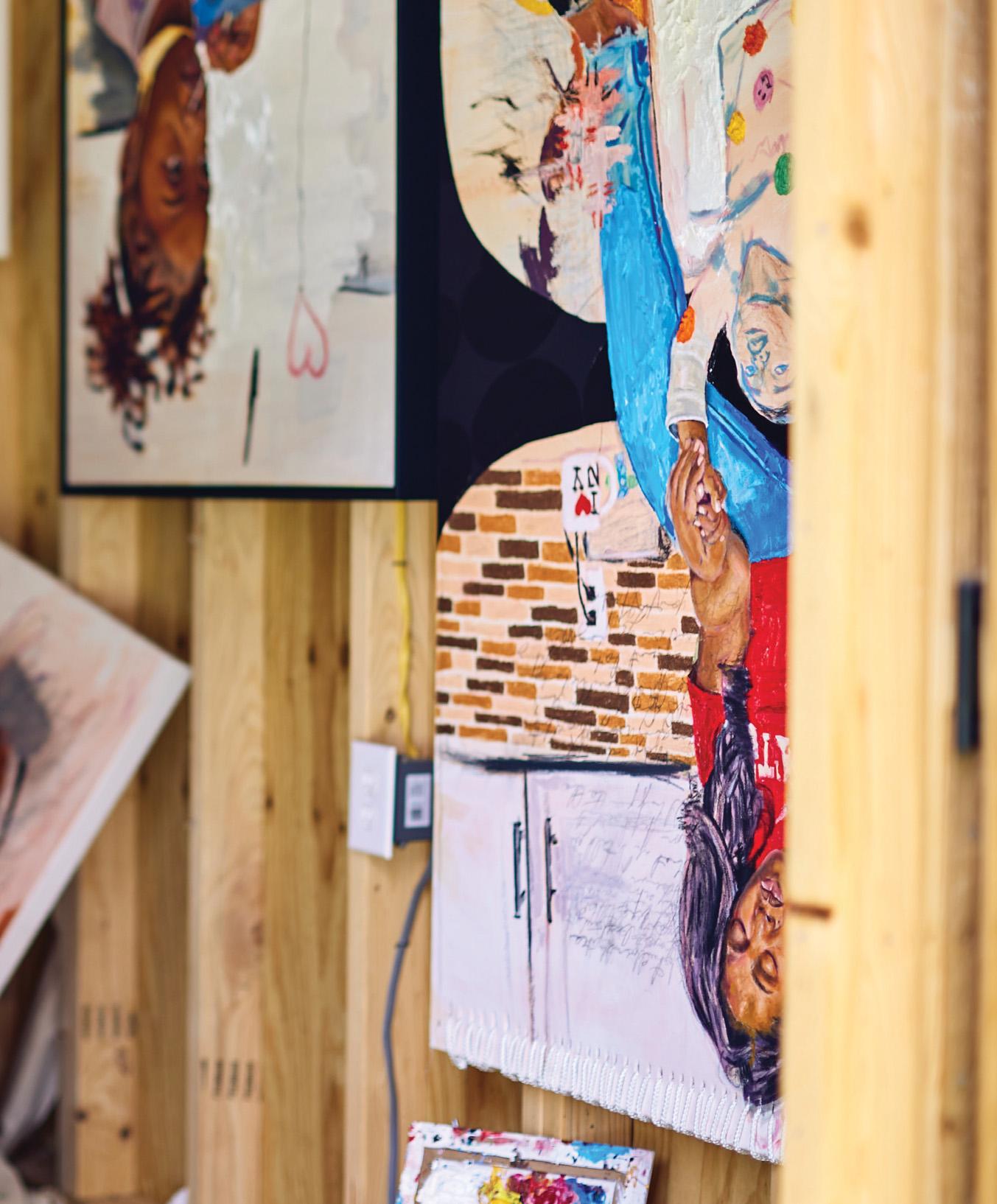

Lamar Whidbee takes a meditative approach to his mixed-media art
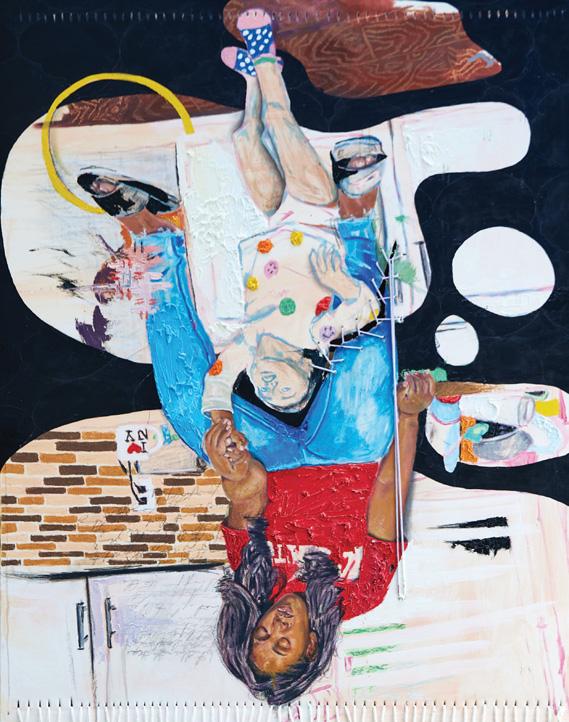

Lamar Whidbee often writes his thoughts in a small sketchbook, on pages the color of cardboard. Without adding dates to the journal entries, he writes whatever comes to mind at the moment. “It could be thoughts while reading a book, or from a long day of work,” says Whidbee. “Either way, I write to understand my feelings.”
The thoughts in that notebook lead him to the canvas where, before any creation takes place, this mixed-media artist will sit in front of the materials in silence, praying and meditating. “Life, like art, seems to be a culmination of choices. It’s up to the individual to choose to persevere through defeat, agony and success,” says Whidbee. Whidbee’s work has been exhibited at the North Carolina Museum of Art, Visual Art Exchange, Durham Art Guild, Art Center of Greenwood (South Car-
olina) and the Arts Center of Carrboro, as well as galleries at the University of North Carolina at Chapel Hill, Meredith University and Winston-Salem State University. He regularly works on three pieces simultaneously. “When the ideas aren’t flowing for one piece, I can observe it while working on something else,” says Whidbee. “My current mediums include graphite, charcoal, oil pastel, acrylic paint, oil paint and thread — the variety of materials helps satisfy my desire for texture and immediacy.”
Frequently, Whidbee’s work touches on themes of family. “I create art around family because it is my truth. Family is what I connect to most,” he says. “Maybe that derives from being raised as an only child.” Whidbee grew up in rural Hertford, raised by his grandparents. A creative and curious child, Whidbee remembers following his grandfather everywhere; it was from him that he always heard
the phrase “make do with what you have” — the key words being make do “Circumstances in life change, whether it be finances, health, environment, but the artist always finds a way to create,” Whidbee says. Whidbee left his small town and familiar environment to enroll at North Carolina Central University, a school with a long tradition of supporting artists and creatives. A gifted high school athlete, Whidbee started his college career as a wide receiver on the football team as his primary extracurricular.
It was renowned artist Beverly McIver, an endowed professor in the art department there, who shifted his focus. McIver noticed Whidbee’s talent and began to mentor him. “Lamar was a student at NCCU that showed promise and an inquisitiveness that is uncommon in many students — why I suggested he quit the football team and pursue art,” says McIver.

“I believe that art is created just as a person’s life is — on a daily basis.”
— Lamar Whidbee
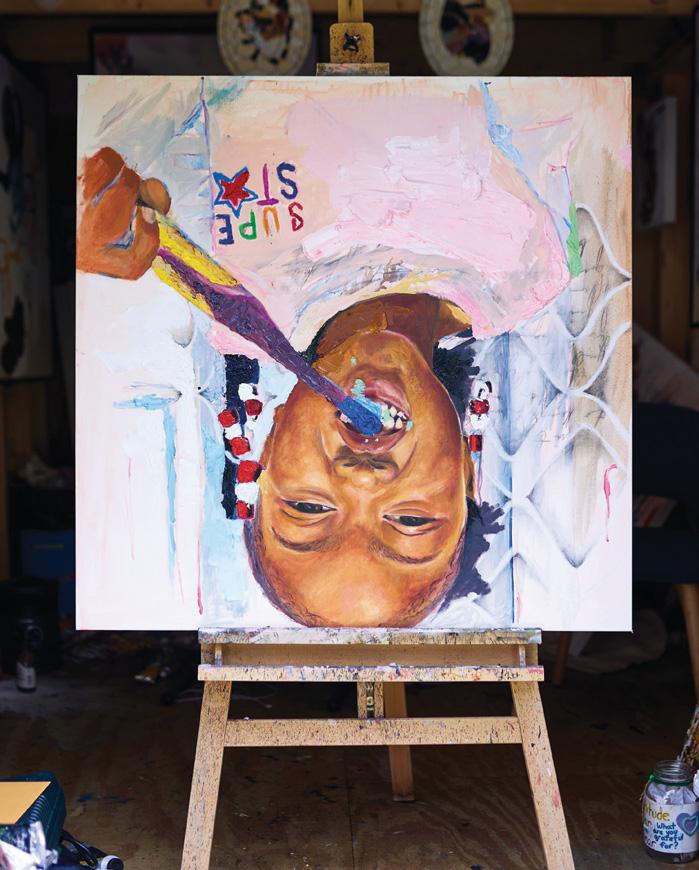
Under McIver’s tutelage, Whidbee mastered myriad painting techniques, including impasto, where paint is thickly applied to the canvas to create texture and brushstroke visibility. This technique has become a signature, bringing to life the real emotions in the faces of the people that he paints. “What I learned from her was that your intuition is normal… those thoughts and things you’d like to say, you can as an artist,” says Whidbee.
In 2011, McIver encouraged Whidbee to submit work for his first group art show, at Craven Allen Gallery in Durham. “Lamar’s work affirms the importance of having the talent coupled with a vision. He understands that the vision may not be present immediately but reveals itself through the artistic process,” says McIver. After selling his first exhibited work, Whidbee realized he had some decisions to make around his future, and that being a full-time

artist might be a possibility.
“Whidbee was a gifted student, very much dedicated and passionate about producing art. He was one of those students you would see around school, always looking for the opportunity to improve,” says Christine Perry-Espinoza, who was curator at the NCCU Museum of Art while Whidbee was a student and included his work in group shows in 2012 and 2013. After graduating with a degree in studio art from NCCU in 2013, Whidbee went on to get an MFA from UNC-Chapel Hill and a license as a clinical mental health counselor associate from North Carolina State University. Along the way, Whidbee also became a father; he and his wife, Sanailer, have two children, Stone and Star, and now live in Knightdale. Whidbee almost always brings his children to see his art exhibited, even if only to see themselves on museum walls — they often serve as muses for his work. One piece, Footsteps,
captures Stone walking in his father’s shoes. It’s an approachable piece, done with humor, relatability and a casual tone. Another mixed-media work, Covid Baby, features Star getting swabbed for a Covid test, with a look of both compliance and annoyance that many parents will recall from the pandemic.
These two pieces are included in Daddy’s Home, an exhibit currently on view at CAM that Whidbee debuted at Artspace during a studio residency as a Jo Ann Williams Fellow. It examines the realities, value and pride of fatherhood through the African American lens, specifically “the impact the decisions my father had on my own approach to fatherhood,” says Whidbee. Incorporating traditional materials such as pencil, canvas and paint, he also used found materials, such as cardboard. “I used this disposable substrate purposely,” he says. “Growing up a little boy of color, I sometimes felt that



the world viewed me as disposable.”
And yet, the artwork in Daddy’s Home exudes safety, security and unspoken love — values that he learned from his grandparents and practices with his own family. “I saw firsthand a father figure that was transparent,

caring and protective,” he says. That thoughtful approach underscores a parallel practice as an art therapist. Whidbee works with individuals and couples to express emotion through painting and has written a children’s book, 1 2 3 4 Breathe, inspired by the square-breathing technique to encourage mindful practices.
“Lamar wears many hats: artist, father, husband, counselor, change agent and most remarkably, student,” says Raj Bunnag, curator of exhibitions at CAM and a fellow UNC MFA. “He is always eager to learn more while navigating the journey of an artist.”
Whidbee continues to exhibit in both solo shows and group exhibitions around the country. In 2022, he exhibited along with his mentor, McIver, in Full Circle at the Scottsdale Museum of Contemporary Art. He’s found himself part of a growing community of young artists of color in North Carolina making their
mark. “There is a communal pride of Lamar and everyone is eagerly awaiting to see where his art will take him,” says Perry-Espinoza, who is now curator of exhibitions at the Spelman College Museum of Art in Atlanta. Bunnag agrees: “Lamar is an artist with more than just talent; his work speaks to the experiences of underrepresented communities transcending race, demographics and gender.”
Ever thoughtful, but humble, Whidbee’s focus is much narrower. “Consciously, I rarely think about legacy in my work,” says Whidbee. “I believe that art is created just as a person’s life is — on a daily basis. But if my art leaves a mark on someone’s life, I’m grateful that my interactions with my family have been part of their process.”
Opposite page, left: Superstar; a scene from his studio. This page, clockwise from top left: Footsteps, Nude Man, Adorn.
Every year, we invite North Carolina authors to submit short pieces for our Summer Reading issue — the perfect complement to a sunny afternoon by the beach or the pool. This year, we have fiction from Greensboro author Brendan Slocumb and Rockingham County author Valerie Nieman. Each piece takes us in a different direction, as you soon will see...
He smelled like the cake factory: frosting, the yeasty stench of batter and butter, but more than anything else, sugar. Baked sugar, tangy and sweet, that coated the back of his tongue and the inside of his eyelashes. Leaving the factory at the end of the shift, he could feel the sugar aroma around him like a coat or a fog, always moving with him. Of course, his friends started calling him Bon Bon. He’d hated the nickname, but by now it had hung on him so long that he didn’t mind it.
He ordered another beer and checked his watch. His buddy, Tig, was late, as usual. Meet me at the bar at 6:30 and DONT BE LATE, Tig had texted him. SERIOUS!!!
Now it was 6:49, and he’d finished the first beer and ordered a second. Why Bon Bon had believed Tig that this time actually was urgent, Bon Bon didn’t
know. He’d shown up in his work clothes without changing back into his street clothes, the King Arthur Brand cake flour misting up from his pant legs every time he shifted on the bar stool.
“You makin’ me hungry, buddy,” Alan, the bartender, told him for the third time. “What do you think of carrot cake? You a big fan?”
“I figured you for a chocolate cake man,” Bon Bon said. “That was your wife in the shop the other day, wasn’t it? She bought the 14-inch and the 18-inch. Double chocolate.”
“Wife loves them,” Alan said, buffing the bar and looking away. His A-shirt, with dozens of stains on it — bourbons, whiskeys, wines — barely covered his paunch. Seemed like Alan loved those chocolate cakes, too.
Bon Bon nodded politely, tried to squeeze out a smile and looked again at the door.
“You must get sick of cakes,” Alan
said. “All them sweets. That vanilla confetti cake is my favorite.”
“Never touch the stuff,” Bon Bon said. “I only eat salty stuff. You got more of these?” He pushed the empty dish that had contained pretzels and peanuts towards Alan. The first few months at the factory, Bon Bon had eaten so many pastries that he became nauseated by the sight of anything with sugar in it.
He looked at the clock. It was 6:54. If Tig didn’t show by 7, Bon Bon was out of there. Home, out of the sugar-stenched clothes and into the shower. He imagined hot water sluicing over him, the powdered sugar circling the drain and disappearing. He fumbled in his pocket for his wallet, looking for a ten, when a familiar voice said behind him, “You stink like the inside of a fat woman’s purse, you know that?”
Tig. Of course. “What?” Bon Bon asked him. “What does the inside of someone’s purse smell like? And where
were you?”
“They keep cake in them,” Tig said. “The ladies.”
“Nobody keeps cake in their purse,” Bon Bon told him. “That’s the dumbest thing I ever heard you say.” And he’d heard Tig say plenty of stupid things over the years.
“Come on, let’s go.” Tig was already heading toward the door.
“Go where?” Bon Bon said. “Why did you want to meet here? Now we’re leaving? What’s going on?” Bon Bon grabbed a handful of the peanut-pretzel snack from the newly replenished dish, thanked Alan with a wave and trotted to keep up with Tig, who was already off.
By the time Bon Bon caught up with Tig, he was almost to his car, a beat-up dark green Chevy Malibu, whose passenger door had gotten side-swiped years ago and was missing the side mirror and most of the chrome trim. Tig was what Bon Bon’s mother referred to as “a character.” Overalls, sleeveless shirt, dirtand-oil-coated John Deere trucker cap, Reebok tennis shoes so faded and stained with oil and dirt that their color would forever be a mystery.
“Get in,” Tig said.
“Where are we going? When will we be back? I can’t just leave my car — ”
“GET IN,” Tig said, almost an order this time.
Bon Bon never knew why he got in the car that night. Maybe because he’d done other stupid things with Tig in the past and this was just par for the course. You wouldn’t believe what Tig just did, Bon Bon imagined texting his friends later tonight. It would be fodder for conversation for days to come.
The car stunk of cigarette smoke and chaw. A spit cup sloshed in the dashboard console. Bon Bon stuffed McDonald’s wrappers, Entenmann’s boxes, Dunkin’ bags and miscellaneous trash off the seat, and got in. Before he could even buckle his seat belt, Tig spun the tires and headed out of the parking lot toward the highway.
“What’s this about?” Bon Bon repeated, swallowing the last of the pretzels. Tig smiled. Drove for a minute, en-

joying the power. Then, dramatically, he said, “I’m about to make us rich.”
“No,” Bon Bon said.
“Yep.”
“OK,” Bon Bon said. “Let me out. Turn around. Stop this piece-of-crap and let me out. I told you before. I’m not getting involved in any of your messed-up money-making — ”
“It’s guaranteed cash and you’re already in it,” Tig said without missing a beat.
“Stop the car. I mean it.”
“Too late. You’re going to thank me in about 12 hours.”
“What the hell are you talking about? Twelve hours? What did you do? What are we doing?”
“I just made you 23K. I get 27K, you get 23K.”
“For what?” Bon Bon asked.
Frustration and fury boiled in his gut the way it often did when he had to deal with Tig. “You just handing me 23K for sitting here?”
“For coming with me, yeah,” Tig said, darting a glance at him. Bon Bon couldn’t decipher it. “All you gotta do is drive when I get sleepy.” The highway spooled out before them, the endless ripple of white lines bisecting the night. Few cars were out this late, and all seemed to be going in the other direction.
“Hell no. I don’t know what kind of craziness you’re getting into, but I’m out. I gotta work in the morning. Turn around. Take me back to my car.”
Tig laughed. “Bro, they won’t miss you at that cookie house. Besides, in 12 hours, you’ll have enough money to quit that job and do something that doesn’t leave you smelling like a giant cupcake. Lose that dumb ass nickname. Grown man named Bon Bon. I’m doing you a favor.”
“Screw you. Dammit, I knew I should have just gone home.”
The car banked around a wide curve, then through a series of up-and-down humps in the road. If you drove fast enough, it was like riding a roller coaster. For an instant, you could lose your stomach as you crested the rise.
On the descent, a thump came from the trunk.
“What was that?” Bon Bon looked in the back seat, stacked neatly with big square boxes: Macbook Air, read several. UN3481, read others, with the logos of a battery and a flame. They were all laptop computers. The back-seat floor was the usual sea of fast-food wrappers, napkins and trash. Nothing moved.
The thump came again, as if whatever was back there shifted back to its original position.
“What’s going on?” Bon Bon asked. He couldn’t hide the note of nervousness now in his voice. “What’s in the back seat? Is that stuff stolen? You raid an Apple Store or something?” He tried to imagine how many laptops would be worth $50,000. There’d have to be at least twenty-five, maybe more.
“Nothing. Don’t worry about it.” The
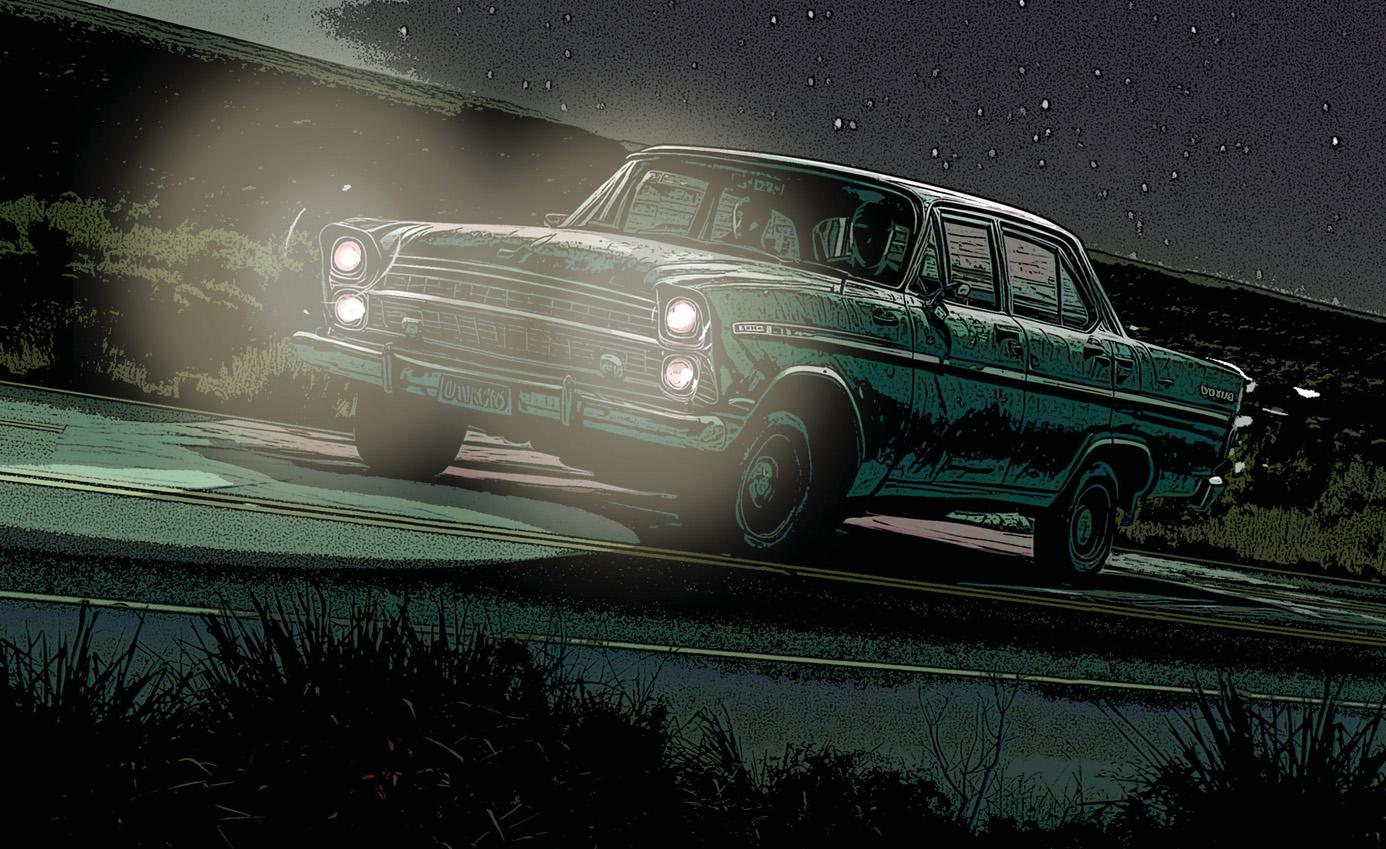
car was going faster now, well over 80 mph.
“I knew it. I freakin’ knew it. What did you do? I’m not dealing in stolen goods, Tig. Stop the car.”
Tig groped in the driver side door. Bon Bon thought at first that Tig was looking for his wallet or maybe a soda bottle. But after a moment Tig retrieved a small triangular object that seemed to absorb the dim lights from the dashboard before it resolved itself into a gun. It glittered as if alive. Tig gripped the handle and then the muzzle was pointing, impossibly, at Bon Bon himself.
“T, what the . . . ”
“Just shut up,” Tig said. “I’m doing you a favor. Nobody is getting hurt. We walk away with more money than either of us has ever seen.”
Bon Bon had only seen Tig this erratic once before. It ended with Carl Simmons walking with a permanent limp and Tig spending three years in prison for aggra-
vated assault. Bon Bon stared at the dark muzzle of the gun. His mouth had gone dry, the pretzel crumbs turned to gooey dust on his tongue. He wiped his hands on his pants and could feel the flour and sugar coating his palms. He wanted to scream. Instead he took a deep breath, looked out the window into the dark, trying to ignore the feel of the gun staring at him. “OK man, just tell me where you get all these computers from. And what we’re going to do with them.”
“The less you know the better,” Tig told him. “Get some rest. You’ll take over in six hours. We gotta make the drop by 8 a.m.”
Bon Bon had heard that Tig had gotten into some shady business while he was in prison. This whole scenario was making more sense. Tig, and now Bon Bon, were driving stolen electronics over state lines. He wondered if $23,000 was worth getting caught. If the police pulled them over —
Tig turned on the radio with an aggressive punch of his forefinger. Kellie Pickler’s “Red High Heels” deafened them. Bon Bon turned down the volume.
Over the next two hours, Bon Bon sat in silence, thinking. Tig couldn’t be reasoned with, that was pretty clear. Bon Bon could wait till Tig fell asleep and turn the car around, but what would happen when Tig woke up? Bon Bon glanced down at the gun again, resting lazily on Tig’s thigh, and looked out the window. He could grab his phone and try putting it on mute and dialing 911, but the phone’s light would turn on and Tig would see it for sure. Bon Bon’s palms felt chalky from the mixture of sweat and cake flour dust. The damp, sugary smell from his trousers made him want to retch.
“Hey,” he said when lights from the next exit glimmered on the horizon. Signs for gas, food, lodging. “I didn’t get dinner when I was sitting there waiting

for you, and I’m starving. Do we need gas?” He pretended to stretch and stifle a yawn.
Tig kept his eyes on the road, but his grip tightened for an instant on the gun, then relaxed again. “OK,” he said after a minute. “I am too. All right. I’ll pump the gas and you get us some food.” Tig took the exit too fast, the car almost on the berm before he overcorrected. Again came the thump from the trunk. “And don’t try anything, man. I’d hate to kill you, you hear me?”
The gas station was half-a-mile down the road, its fluorescent lights bright and disorienting. No cars were parked at the pumps. A single beat-up Honda sat tucked against the building. Bon Bon had been hoping for a late-night police cruiser, an RV, anything.
After the car had come to a halt, Bon Bon got out, making sure his movements were slow and casual. He could run in, tell the attendant to call the cops, who
could be here in minutes. He glanced over at Tig, who was staring hard at him. He looked away, pulled open the glass door. He could feel Tig’s eyes on him, even in the snack aisle.
He picked up several bags of Flamin’ Hot Cheetos, hot chili and roasted lime Takis, jalapeño Kettle potato chips, and honey barbecue and hot mustard pretzels. Then went to the refrigerators on the wall and pulled out four bottles of Pepsi.
At the cash register, Tig’s gaze brushed his shoulders as Bon Bon paid and the clerk stuffed everything in a plastic sack. Again and again, he contemplated saying something but then imagined Tig leveling the gun at them, the bullets spider-webbing the glass.
The door behind them jingled, and Bon Bon jumped. “You almost done, man?” Tig called in.
“Yeah,” Bon Bon said. The clerk put a handful of change on the counter, and
Bon Bon swiped it into his palm. “You owe me 18 bucks,” he told Tig as he brushed past him out the door, out into the cool night and the waiting car.
“Oh you’ll get that and more soon, buddy.” Bon Bon could hear the relief in Tig’s voice. “You feel like driving now?”
“Yeah, I can take over,” Bon Bon said. “You eat up. Did you check on the trunk? On whatever fell over back there?”
“Don’t worry about it. It’s fine,” Tig said.
Bon Bon pulled out of the parking lot as Tig tore open the purple bag of Takis, stuffing a handful into his mouth. “Damn these are good. You want some?”
Bon Bon shook his head. “In a sec.” He took a sip of Pepsi.
“These things are spicy,” Tig said, playing on the word spicy. “Whooo-eee.” He cracked open his Pepsi and drained half of the bottle. Bon Bon took a sip of his.
Tig didn’t tell him where they were
going, just directed him once to turn south, toward the highway running to the coast. Tig broke into the potato chips and Bon Bon munched on pretzels. They passed city after city, and a rest stop in three miles.
“I’m thirsty,” Tig said when he was halfway through the Honey Barbecue Pretzels. “These pretzels are making me thirsty.”
“Seinfeld,” Bon told him without looking over. He checked the rearview mirror. The boxes sat primly on the backseat, giving away nothing.
“What?”
“Seinfeld,” Bon Bon said. “That was a running joke on Seinfeld.” The rest area illuminated the road. “Remember, George said it about 200 times during that show?” They passed the entrance, kept going.
“I don’t know what the hell you’re talking about. You got more to drink?” Tig said.
“There ain’t no more. We drank it all.”
“That ain’t funny,” Tig said. “I’m seriously thirsty. We gotta stop.”
“OK” Bon Bon told him. “Next place we see. I need to take a piss, too,” he added.
They passed a sign. “Next Rest Area: 28 Miles.”
“Damn,” Bon Bon said. “Another half-hour.”
“We can make it,” Tig said, staring out at the darkness. But after another 10 minutes he said, “I really gotta go.”
“So do I,” Bon Bon said. “Bad. I’m going to pull over.”
He eased the Chevy onto the shoulder, put on his flashers.
“What the hell you think you doin’?” Tig said, spraying pretzel crumbs onto Bon Bon’s shirt.
“What? You want me to piss myself in the driver’s seat? I didn’t shower after work because somebody wanted me to meet them at 6:30. So now I smell like cupcakes and if I piss myself I’ll smell a lot worse. That is not a good combination. So you’ve got a choice. Either stop yapping in my face and let me pee, or you can drive the rest of the way in a wet seat.”
He hoped Tig would be too preoccupied to suggest that he pee in the Pepsi bottle. Tig was.
“Whatever. Don’t do nothin’ stupid.” Tig got out of the car, slammed the door. Again the thump from the trunk, and then another.
The car’s headlights beamed into the nondescript grass as Bon Bon climbed out, went around the front of the car. As he reached the berm, he stumbled, tripped, and fell. Then got up, close now to Tig.
“Clumsy idiot,” Tig said, laughing, transferring the gun from his right hand to his left, unzipping. “Next rest stop we’re gonna get something to drink. I’m really thirsty. We got how many miles? 15 or — ”
Wham. The rock that Bon Bon had just picked up struck Tig perfectly, right on the temple. Tig dropped, soundless, so quickly that Bon Bon thought for a second that he was pretending.
But he wasn’t. A moment later he groaned, reaching for his scalp. Bon Bon lunged for the gun, grabbed it and sprinted back to the car.
In a moment cinders flew and he was back on the highway, heart in his throat, going 70, 80, 90 miles an hour.
After a couple of miles he slowed slightly, pulse still pounding. The thump from the trunk came again. Bon Bon pulled over, popped the trunk, went around back.
Inside, a young boy lay wedged against tires and fabric, his hands and feet bound with zip ties. His eyes were bigger than any eyes Bon Bon had ever seen, with such terror and misery that Bon Bon couldn’t speak for a moment as he loosened the gag. The boy struggled away, a panicked bird.
“Hey, it’s OK,” Bon Bon said. “That piece of garbage can’t hurt you.”
He looked in the front seat for a knife, scissors, anything to cut the ties, but could find nothing. So he carried the boy to the front seat, tried to make him comfortable.
“I’m taking you to the police,” Bon Bon told him as he adjusted the seat belt. “The bad man won’t hurt you anymore,
OK?” He tried to sound as calm and nonthreatening as he could.
“You smell like a cupcake,” he told Bon Bon accusingly, voice rough.
Bon Bon laughed. “Story of my life,” he said. “I get that a lot.”
The little boy eyed the bag of pretzels, tucked in between the seats. “Can I have some?”
Bon Bon reached past him for the pretzels, fed him a couple at a time.
“These are making me thirsty, “ he said.”
“Do you like Seinfeld, kid?” Bon Bon said as he pulled out his phone and dialed 911.
Brendan Nicholaus Slocumb is a graduate of UNC Greensboro with a degree in music education. He is the author of The Violin Conspiracy and Symphony of Secrets. He is currently working on his third novel.




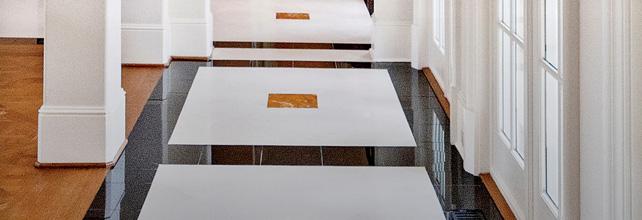








Andi hadn’t been startled awake for several nights, ever since the contractor fixed that foundation problem, but now she sat straight up in bed. Something was wrong. The house, her new home in a new city, remained quiet, all that groaning and cracking having been eliminated by the repairs. It was that other silence — no hum of cars passing on the street, no sounds of a city waking up. And, she realized as she stared into total darkness, no streetlight glow filtering around the blinds.
For a while, she heard nothing. Gradually, light began to show and she heard a chorus of shrieks and whistles — birds? She got up, shuffled to the back door and opened it on a bright dawn, cornfields stretching flat and green in every direction. The rows came right to her steps, tassels waving well above her head. Blackbirds wheeled in huge flocks.
Her house had moved. And she had moved with it.
Even as she tried to make sense of it, speculating that this looked like Iowa — must be, maybe, everyday, common Iowa, nothing to be afraid of — the rest of her brain was rabbiting around the bonkers impossibility of her situation.
>
She had loved the cottage from the moment the realtor opened the door, but, after moving in, she came to realize there was an uneasiness about it. Day and night, floors creaked and popped without the weight of a footstep. When she reached to put something in a high cupboard, the top of it did not line up with the ceiling. Everything was slightly off one way or another, but that’s the way old houses were. They settled year by year, in a long, uneven conversation with the ground.
She didn’t miss her previous home. It wasn’t that, at all. When her ex abruptly went away (for good this time), and shortly after so did her job, she’d decided she needed something smaller to meet her changed circumstances. Something older, solid, with its own history.
Stay, or go. It hadn’t been a difficult choice. Her former home had no longer felt like home. It just felt like him, his house, cold all the time.
>
Three different construction dates — 1921, 1927, 1928 — were listed variously on deeds, descriptions, and reports. It made no sense. A house was completed or not in a certain year. The cedar-shake cottage had been moved sometime in the 1970s and new sections had been added, a porch, a deck. Extensions that almost seemed to buttress the square main building, pushing out on three sides.
Andi had become fascinated by the idea of house-moving. It wasn’t unusual, of course; houses were moved out of the path of development all the time. Even lighthouses were raised up on rollers and carried inland, away from the encroaching sea. She remembered reading about a town in Minnesota that was hauled away from mining damage by horses and tractors and a steam engine. Elsewhere in North Carolina, the former village of Avalon had been moved when its mill burned down, the little houses incorporated into the neighboring textile town of Mayodan.
History was like that, for a house or a person — gaps in the record, mysteries.
>
The recommended contractor came within a week — the benefit of a small town, Andi supposed — and rang the doorbell with his ball cap off, gripped in his hands like he was entering a church.
“Miss Andrea?”
“Andi.”
“Miss Andi. I am pleased to meet you.” He paused and glanced inside. “What were you needing done?”
“I’d like you to look at the foundation.” It sounded too — something— to say she heard strange noises. “I understand the house was moved. Is it well supported? The home inspector didn’t mention anything.”
“Well, you are spot on about the move. I remember when they did it. Quite the show, with traffic held up and all. They put an office building where it used to be.” He kept talking as she led him back to the utility room and the trap door to the crawl space, wondering if a man that old (he had only a fringe of white hair around a polished dome) was agile enough to get around under the joists. But she needn’t have worried — he was quickly out of sight, banging around beneath the floor, and it wasn’t long until he came up out of the hole.
“Found your problem.” He turned off his flashlight, dusted off his hands. “The main support beam, a steel beam at that, has been cut in two.”
“What?” That sounded terrifying, as if the house might bend at the center like a cardboard box and fold itself flat.
“Yep. Might have been part of moving it, I don’t know.”
“Is it dangerous?”
“No, no, there’s plenty of support pillars. Just… strange.”
She hadn’t been able get the vision of a collapse out of her mind. “Can you put it back together?”
“I can do that, sure. Have to come back with some tools, bolts and such. And good steel.”
And so it was done.
>
Two mornings after the cornfields appeared, she awoke to the mooing of cows.
She hadn’t ventured into the tall corn, featureless as a sea. Now she looked out on new fields that rolled away over little hills, fields bounded by hedges instead of fences. Brown and white cows. She looked out of windows on each side of the house. Far away she could see a steeple and what appeared to be a castle.
England?
>
The house did not move on a regular schedule. It stayed in the same place for days, even weeks, then she would hear the wind moaning from a new corner of the eaves and look outside to see — what was that?
She was cautious. When the house set down in a populated area, no one seemed to notice. People apparently could not see the house, but once she stepped off the porch, they could see her. The first time she’d tried, somewhere under a hot, pale sky, black-haired children clamored at her and she ran back inside. They stood for a moment, wide-eyed, letting the stones drop from their hands, and fled.
Did she appear suddenly, popping into view? Was she floating in a bubble like Glinda? No way to tell.
The movement of the house in space and time became wider and wilder. One day she might look out on a Japanese seaside town with little boats and a pagoda, and a couple days later, she’d be in the United States, far to the north, in a logging town at the edge of a redwood forest. The house, severed from a permanent base, had no utilities, but Andi did have a large supply of candles. And a rain barrel that had been strapped to one of the additions.
I am resourceful, she thought. I am doing fine. >
Turn and turn and turn again.
The days were long and the nights longer in the wandering house. She missed her friends, especially Nicole, a coworker who had stayed close through both the divorce and her early (forced) retirement from their employer. Nicole had always teased her for overly careful preparation, cautious decision-making. What would she say about this?
Andi even sort of missed her ex. He had been a familiar problem, at least.
She learned how to gather food in exotic places, covering her foreignness with a long, hooded cloak, a souvenir of her role in a college Shakespeare production. Where there was a store, a souk, a market cross, she waited and watched, moving in when the crowds had thinned and the leavings were cheap. The smell of cooked meat made her ravenous.
She could barter jewelry and small items to merchants. Gestures were pretty much universal. As her hair grew unruly and her scrupulously kept-up color faded to salt-and-pepper, with her head down and a hand upturned, she could sometimes gather alms from passersby. No need to speak. Maybe she
couldn’t any longer.
>
Andi fell asleep with the house settled someplace that was high and cold and empty, a steppe. She woke to find it beside a long lake clasped by dark-forested mountains. Well down the shore was a cluster of thatch-roofed cottages.
Hunger drove her to the village and, as she looked for some place to get food, she was relieved to realize the people were speaking a sort of English. It wasn’t market day, but a house displayed a bush over the door. That meant beer was available, she remembered from a long-ago advertising class.
She nodded to the woman inside, dressed in a bodice and full skirts, her hair covered.
“Beer,” she ventured.
The woman, stout as one of her casks, looked oddly at her.
“Ale?” Andi mimed drinking.
The woman responded by shaking a bucket at her.
Ah. Medieval takeout. She had no pitcher, bucket, anything with which to carry the beer away.
Andi put her hand on a pottery pitcher and indicated that she would buy it. She produced a piece of jewelry she’d brought to trade, an alloy ring decorated with the figure of a nude dancing woman.
The woman backed away, eyes wide, and whispered something that sounded like “elf.” Or “help.”
A man came from outside and she pointed to the ring where it lay. He picked it up and turned it in his dirt-caked fingers, squinted at her, and then spoke to the woman, who hustled off to get someone, a priest, a soldier, someone that Andi didn’t think she should meet.
She gathered up the skirts of her cloak and ran.
>
The house didn’t move that night, or the next, or the next. She wished it would.
Andi did not go back to the village, fearing people who feared her. Andi imagined the townspeople might think she was something supernatural, in league with the Devil. She also considered that maybe the stylized figure of a naked woman on the ring had offended them. People went past the house, on their way to fields or driving herds of sheep along, without even a glance.
Then a man as dark as a devil stopped right in front, turned and stared into the window.
“I spy a lass, through the window,” he said.
She hid behind the curtain.
“There thou be, though how this house came hither I dinnae ken.” The man began to walk away, and she thought he’d gone until he emerged from the other side, having circled the house. He stepped up onto the porch and came to the door.
“How can you see this house?” she asked, almost whispering into the gap between the old door and the frame.
“Metal calls to me, shaped in some cantrip-time.”
Andi opened the door but stood behind the screen as though that bit of protection would be sufficient to keep out
this brawny man. A blacksmith, she realized, his skin and clothing darkened by the smoke of the forge.
“The house moves,” she confided. “It was cut apart underneath and then, when it was fixed, it began moving.”
He cocked his head as he listened, the way a dog turns its head as it tries to tune in its person’s unfamiliar words. “The house is magiked.”
She nodded.
“Gie me leave then to see?”
Andi opened the flimsy door and stood back. The whiff of fire and charcoal came with him. He looked around the room, bemused (What did he make of the black slab of the television, photographs on the wall?) then followed her to the access. Like the old contractor, he moved with the assurance of someone who dealt with problems all the time, physical problems that could be addressed with tools and skill.
He was quickly back up, head and shoulders out of the trap door. He tried to explain the situation, and now she was the one who couldn’t put all the words together. However, she came to understand that he had found the steel beam bridged by the contractor’s plates and bolts.
“Can you fix it?”
“Fixt? Your house is scarcely that,” he said, a smile opening his sooty face. “I’ve a gift from the Fair Folk to forge steel that will nae break nor blunt at the bite. Aye, I can do this task. A wandering heart can be put aright, house or lass alike.”
He heaved himself out of the crawl space. She pulled back, away from his seared hands and leather apron.
“If you do, if you fix — unmend — it, what will happen?”
“The heart was cut in twain to end the wandering. If I take away the clampar, ’twill rest again.”
She thought about the various recorded dates of the house’s construction. Had it skipped from year to year, somehow, appearing and disappearing until it was tamed?
“But where? Where will it be?”
“Why, here, lass! I canna make it skip the sea from one shore to another like a stane from the hand of the giant Benandonner,” he said, laughing. “Here this house stays, and thou with it, or else be ever a-wandering like Will-o’-the-wisp.”
She looked out at the dense forests and the long silvery lake. She was aware of the interest in his merry eyes. And the able heft of the man. Solid, he was.
“My folk will thee like. There’s much eerie hereabouts, m’self not least, though we’ve never seen a lass sa conveyed.”
He offered his fire-marked hand.
“Andi,” she said, as she took it.
A former professor at NC A&T State University and editor for the News & Record, Valerie Nieman lives and writes in Rockingham County. Her novel, In the Lonely Backwater, won the Sir Walter Raleigh Award for 2022.












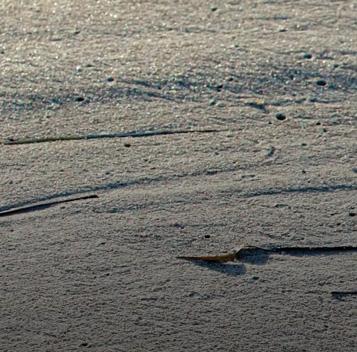











That’s how we feel when we’re surrounded by driven, successful women. And that’s how we feel each year at WINnovation, our annual leadership summit. On Friday, September 15, we will gather at The Umstead Hotel & Spa for an evening to tackle all the topics related to women in the workplace — from fueling ambition to finding balance, from overcoming failure to mentoring fresh talent.
Each year, we invite influential women in our community from diverse backgrounds to share their stories at WINnovation. While their paths may be different, each contains the thread of an innovative spirit — and points of inspiration to take home to your own career. If you haven’t met our 2023 panelists, you can get to know them on the following pages.
In addition to the speaker panel, the WINnovation evening includes professional development workshops and a networking hour. It’s an opportunity to flex your strategic thinking, expand your skills, look anew at your path and appreciate the journey, too.
We hope to see you at WINnovation 2023.

4:00 PM I Startup Workshops
Guests participate in one of three workshops led by area career coaches and entrepreneurs.

5:30 PM I Networking
Over wine and hors d’oeuvres, guests connect with each other and share their learnings.

6:30 PM I Speaker Panel
While the panelists speak, guests enjoy a three-course dinner. Afterwards, the audience is invited to ask questions.














Ballet dancer Debra Austin rose to prominence in 1982 when she was promoted to the rank of principal dancer at Pennsylvania Ballet, making her the first African American female principal dancer of a major American ballet company. Austin was also the first African American female dancer at the New York City Ballet, which she was invited to join by George Balanchine. She currently serves as the ballet mistress for the Carolina Ballet. Austin retired from dancing in 1990. She has taught ballet at the American Cultural Center, Palm Beach Dance Center, the Miami City Ballet School and Cary Ballet Conservatory. When the Carolina Ballet was founded by Robert Weiss in 1997, Austin was hired as a ballet master for the company.
Janet Cowell is CEO/President of Dix Park Conservancy. Cowell held publicly elected office in North Carolina for 15 years, including eight as State Treasurer. The first woman elected treasurer, she managed over $100 billion in assets, and health and retirement benefits, for over 900,000 members. Cowell serves as a director on the boards of James River Group Insurance, Channel Advisor and New Republic Partners, as well as independent chair for IFM’s Global Infrastructure Fund Investor Advisory Committee. Cowell is a graduate of the University of Pennsylvania and earned her MBA and MA in International Studies from the Wharton School of Business and the Lauder Institute.
Kathryn Shah is the co-founder and CEO of Spring & Mulberry, a modern food brand reimagining sweets, starting with date-sweetened chocolate bars. Launched in March 2022, the brand has sold out five times and been featured in Bon Appetit, Vogue, Goop, Forbes and WALTER. Shah was inspired to start the company after a cancer diagnosis in her early 30s led her to quit refined sugar and explore the healing power of food. In her prior life, Shah was the head of Global marketing for Pantone, the color company, and worked in marketing at LVMH and Unilever. She holds an MBA from Harvard and a BA from The University of Michigan. She lives in Raleigh with her husband and toddler Penelope.
Born and raised in South India, Preeti is the embodiment of what Cheeni is: a mix of Indian and American culture, with a mission to better the world through good, homemade food. When she’s not at Cheeni (which is rare), Waas is likely to be spending time with her family or reading a book. Nobody was more surprised than she was at being nominated as a James Beard Best Chef Southeast Semifinalist in 2023.
Led by Danielle Galmore, Touchpoint Wines
Your brand is what others say about you when you are not in the room. Being intentional can help you build a professional reputation that can be a powerful tool in advancing your career. In this workshop, we reflect on our brand, then use label design as a metaphor and framework to express our personal brands.

Led by Chasta Hamilton, Entrepreneur/Speaker/Author
How do you use your authenticity and vulnerability to elevate your personal and professional paths? Using our truths and tragedies, we will discuss an actionable 12-step plan about how our stories can unlock personal growth as well as serve as an inspiration to those around us.
Led by Melissa Carrier and Elizabeth Benefield, Radiate Works
Innovation is both art and science. Through practice, you can build the skills to open new channels of creativity and problem solving, and deliver value for all stakeholders. Rather than a “check box” approach, join us in learning how to adopt an innovative mindset to maximize your individual and collective impact.

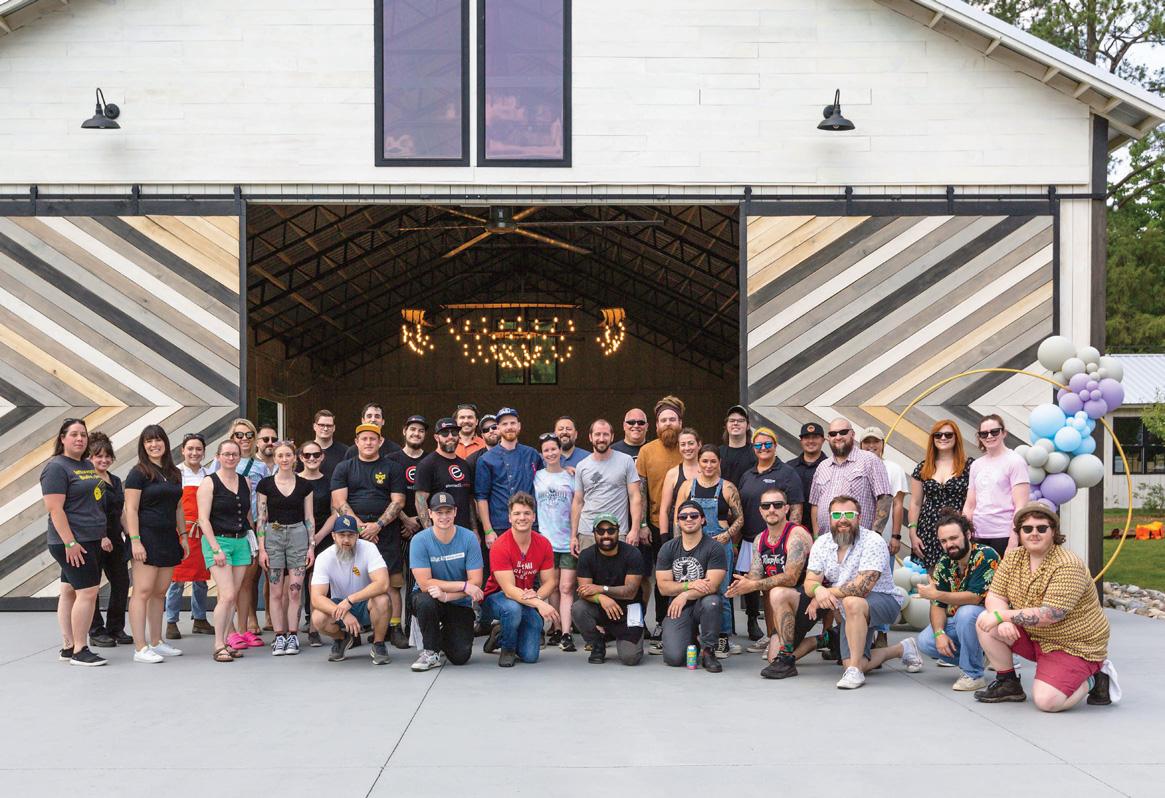




Guests will have dinner with Lamar Whidbee and hear about his process, work, and meet with other art enthusiasts in the community. Everyone will receive a signed limited edition Lamar Whidbee print.
Sponsored by Hodges Insurance Agency, Temple Sloan Family Foundation, AV Metro, Catering Works, and Winefeed. This project is supported by the United Arts Council of Raleigh and Wake County, Raleigh Arts, and the North Carolina Arts Council, a division of the Department of Natural and Cultural Resources. CAM Raleigh is funded in part by the City of Raleigh based on recommendations of the Raleigh Arts Commission.
CAM Raleigh 409 W. Martin Street Raleigh, NC 27603
Friday, August 18, 2023 at 6 p.m.
$100 for Members, $120 for Non-Members
Purchase tickets at camraleigh.org

On June 11, Under the Oak Catering chef and owner Blake Gotliffe hosted Roots for Reece, a food-filled fundraiser to benefit the North Carolina Harm Reduction Coalition. Guests enjoyed tasty samplers from NC restaurants and bars.













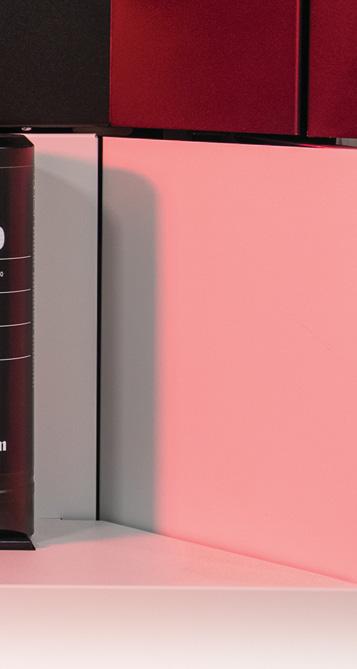

NC THEATRE BRUNCH
On June 4, supporters and performers gathered at the home of Anna Churchill to celebrate the 40-year history of the North Carolina Theatre and its Conservatory. Broadway performer Reed LoRenzo Shannon shared his experiences on the stage. Sponsors included Synergy Face + Body, Catering Works and Taylor’s Wine Shop.







 Reed LoRenzo Shannon
Anna Churchill
Guests at the event
Dajuél Lane
Reed LoRenzo Shannon
Anna Churchill
Guests at the event
Dajuél Lane

Whatever your musical jam, Weymouth Center’s got you covered. Join us for any one concert or subscribe and buy a full series and save. Play it your way. Whatever you choose is a sound decision!

August 27
The Matt White Quartet “Rhythmically brash” music rooted in the jazz tradition
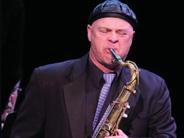
April 7
Kenni HolmenNew Age Soprano & Tenor Sax

September 24
Mint Julep Jazz Band - A vintage sound that’s always fresh

April 28
Brooke Alford and Ensemble: Jazz violin... with a feel good groove

October 29
Lucy Yeghiazaryan“Straight-ahead” jazz vocals

May 19
THRIO - Original music and arrangements of American standards
Individual concerts start at: $27.50 Series of 6 starts at $145 • Subscribe & Save $20 • Student Tickets Available
Chamber Sessions • 2 pm




September 10
Friends of Weymouth Ensemble - premiering “Casualty,” a poem by James Boyd set to music by Dr. Paul Murphy.

January 21
Boston Public Quartet - Created to normalize the amplification of historically excluded voices.

December 10
Nicholas Susi - “an innovative musician with a gift for keyboard brilliance.”

February 4
Nick DiEugenio - Violinist “programs that live on the edge of both ‘modern’ and ‘baroque.’”
Individual concerts start at: $30
Series of 4 starts at $100 • Subscribe & Save $20 Student Tickets Available
555 E. Connecticut Avenue, Southern Pines, NC A 501 (c)(3) organization
Live from the Great Room • 7 pm

October 22
Eric Vloeimans & Will Holshouser: trumpet and accordion bringing together jazz, classical and folk music.

December 17
Larry & Joe: Venezuelan and Appalachian folk music - harp, banjo, cuatro, fiddle, upright bass, guitar, maracas, singing.
Individual concerts start at: $30
Series of 2 starts at $50 Subscribe & Save $10

TIM BROWN BOOK LAUNCH
On July 11, Joyce Fitzpatrick and Kim Von Weihe hosted friends to celebrate the launch of Tim Brown’s new book, The Tao of the Backup Catcher: Playing Baseball for the Love of the Game.

MOSAIC SCULPTURE DEDICATION
On May 15, Chatham Park celebrated the installation of a sculpture by local artist Theresa Arico in honor of the opening of the Guild Apartments in the MOSAIC community in Durham.

FTIZ-SIMONS SOCIETY DINNER
Raleigh Little Theatre held its annual Fitz-Simons Society dinner at the Executive Mansion on June 12. This society was started in 2011 in order to recognize the Theatre’s generous supporters and to honor RLT’s longtime artistic director, Haskell Fitz-Simons.











On June 8, Devil-Dog Dungarees celebrated its 75th anniversary with a reception at Zebulon’s Olde Raleigh Distillery followed by a relighting of the fully restored iconic 1950s sign and check presentation to Wounded Warrior Project.






On July 12, Business North Carolina celebrated the publication of its annual Power List with a “Power Trip” gathering at the City Club in Raleigh. More than 80 guests gathered to support the business leaders who were named to this year’s cadre of influencers.






A versatile warehouse space 5 minutes from downtown Raleigh. Follow us @whitakerandatlantic to stay connected and visit our website for rental inquiries as well as our in-house event calendar.





of professionals has you covered! Follow us @poshnoshraleigh to stay connected and visit our website to inquire about how we can make your next event spectacular.
Norwood Teague Michael Gray, Regina Gray, Kacey Katzenmeyer, Tyler Norris Chris Roush, Chris Chung, Wit Tuttell Kevin Walker, David Mildenberg, Thomas Taft

PART OF THE FABRIC OF RALEIGH SINCE 1899
PART OF THE FABRIC OF RALEIGH SINCE 1899
Our patients receive state-of-the-art care in a warm, professional, safe and friendly environment.
Our patients receive state-of-the-art care in a warm, professional, safe and friendly environment. We welcome new patients!
DANCING WITH THE CAROLINA STARS
The Carolina Theatre of Durham’s annual fundraiser, Dancing With The Carolina Stars, raised more than $90,000 to support its programs. Andrea Moore of Alley Twenty Six and her dance partner, Michelle Dorrance, won the competition with their tap dance routine. After the event, the theater was transformed into a multi-level VIP experience featuring music and dance.
OUR SIGNATURE SERVICES INCLUDE:
OUR SIGNATURE SERVICES INCLUDE:
Comprehensive & Cosmetic Dental Care
Comprehensive & Cosmetic Dental Care
Same-Day CEREC Crowns
Same-Day CEREC Crowns
Suresmile Clear Aligner Orthodontics
Invisalign Orthodontics
Dental Implants
Dental Implants
Sleep Apnea
Sleep Apnea
TMJ Therapy
TMJ Therapy


919-782-0801

www.drgregweaver.com
919-782-0801 wwwdrgregweavercom






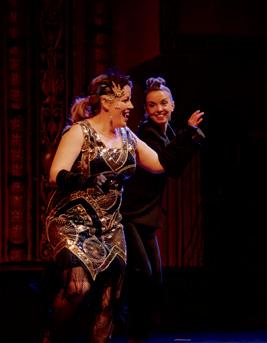





THE GROWNU-UP’S GUIDE TO GLENWOOD SOUTH
No, it’s not just for young people! Try out one of these 10 spots for a great drink and a fun ambience. by Nelie Tahssili

A FIRST LOOK AT AJJA, CHEETIE KUMAR’S NEW FOOD CONCEPT
This airy restaurant offers thoughtful Mediterranean-inspired food in a bright and friendly atmosphere. by Ayn-Monique Klahre



Postcards from our city’s skyline by way of
@raleighskyline. We got to know the man behind the lens.

“The ultimate beach read!” - Sir Walter Raleigh

How could it rain this weekend? My nose is pressed against the glass; no boat traffic on Taylor’s Creek. The Carrot Island horses graze across the water, enjoying the reprieve from the tourists. We vacationers, however, want our sunshine! And with a house full of young adults, what am I to do?
Historically, on a day like this, we’d march the gang to the NC Maritime Museum, then hop over to Fort Macon and the NC Aquarium at Pine Knoll Shores. But now my kids are in high school and college. Thankfully, this crowd sleeps in, which means one less meal to consider and more time to ponder the situation.
My husband, the early riser, has already enjoyed an all-American breakfast at the Beaufort Café, no fairweather crowd to slow down his meal. Back home, he claims the couch and the remote. He has his rainy-day plan. Slowly, slowly, the kids emerge.
“We’ll make lemonade from lemons,” says my daughter. “Let’s go shopping!” We toss on rain jackets and off we go. No walkers to dodge on Front Street, no line for almond croissants at Ciseaux. Besides the whipping wind and the spitting rain, it’s quiet. We dip into a new home-décor shop and peek into a café; we try kombucha from a food truck.
There is a stir of activity. We find the famous North Carolina chef Vivian Howard putting the final touches on the setup for a tasting for her “Viv’s Fridge” ready-made pickup meals. She is lipsticked and calm, despite her

two children horse-playing nearby, an imminent downpour above her wobbly tent, and the crowd that’s quickly assembling. I note that it’s odd for her to be all alone with all that food — her assistant ran to the Piggly Wiggly for a key ingredient for the salad she’s preparing. Soon, the assistant is back. The salad is delicious, the horseplay does not escalate and it does not downpour.
We move on to the Calypso Cottage, an island-inspired boutique; the owner is serving champagne, just for fun. We run into friends. We return home with a nautical knot that will serve as a door opener, a woven clutch, a floppy hat and the store’s signature bug spray. Back at the house, my husband has maintained dominion over the TV. Our feral third child has cycled with a friend to Big Daddy Wesley’s for bags of fructose corn syrup and monosodium glutamate. Our college male and his friends have taken a rainy run, visited a gym for some weightlifting and eaten lunch. Now they’re showered and antsy.






We make a command decision and head for The Backstreet Pub. Tucked into a windowless brick building on Middle Lane, it takes a moment for your eyes to adjust when you enter. A fire burns in the corner. Our spirits soar. The kids and I take the spiral staircase up to the dart boards and chess games on the second floor. And just when the kids think things can’t get any better, I whisper three simple words: Buds on me.
The kids give a cheer, and soon our party of six becomes a party of 10. I don’t care. There’s no raining on this parade.










It’s feeling the pulse of the next level o of cardiac care and wellness. It’s seeing possibilities where others see roadblocks. Pioneering new minimally invasive procedures and robotic-assisted surgeries. Transforming theor y into curative strategies. Even more than that, however, it ’s passion, compassion, th assion, com All joining experience, exper tise and technology. novation forces to create a special place where in saves lives. Visit us at ear ts. wakemed.org/h


